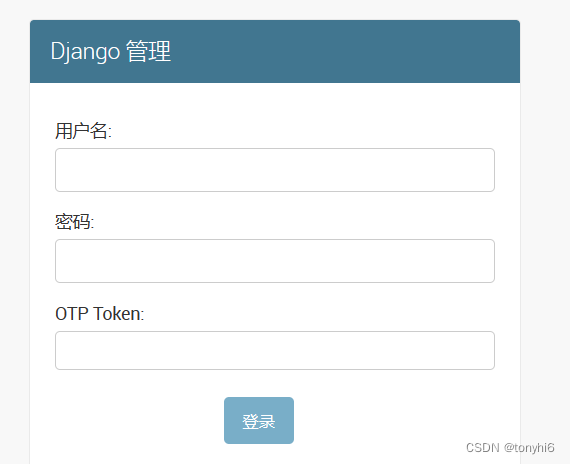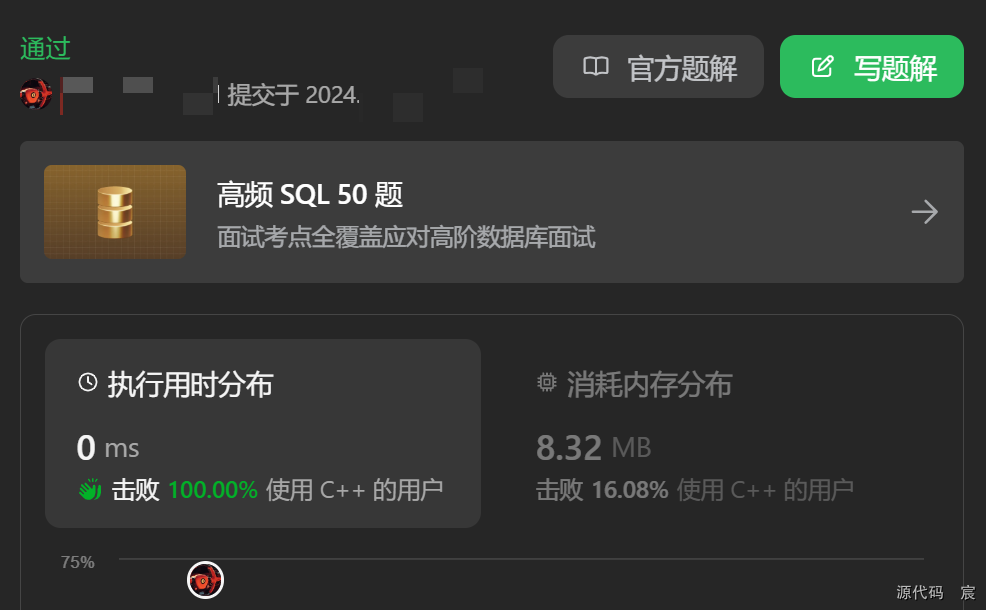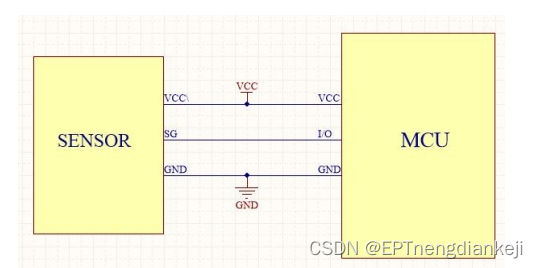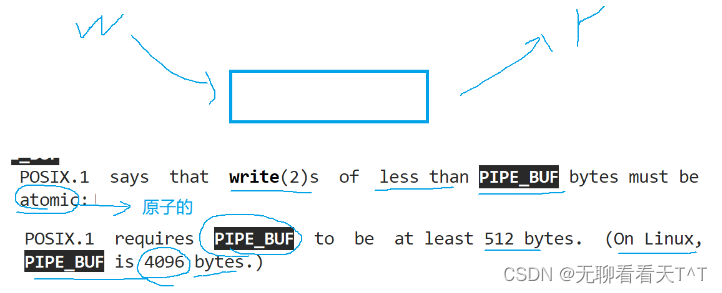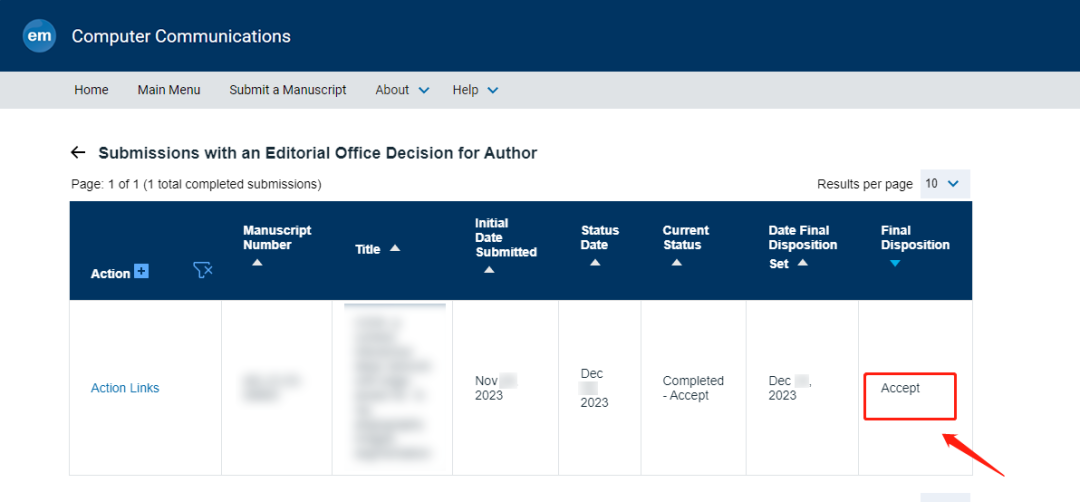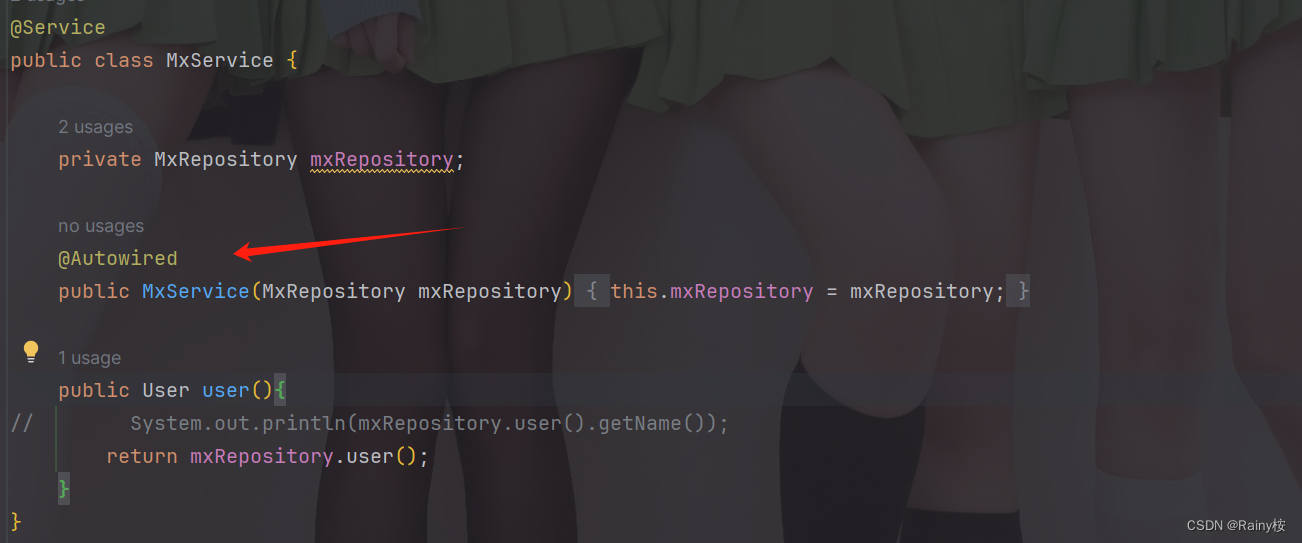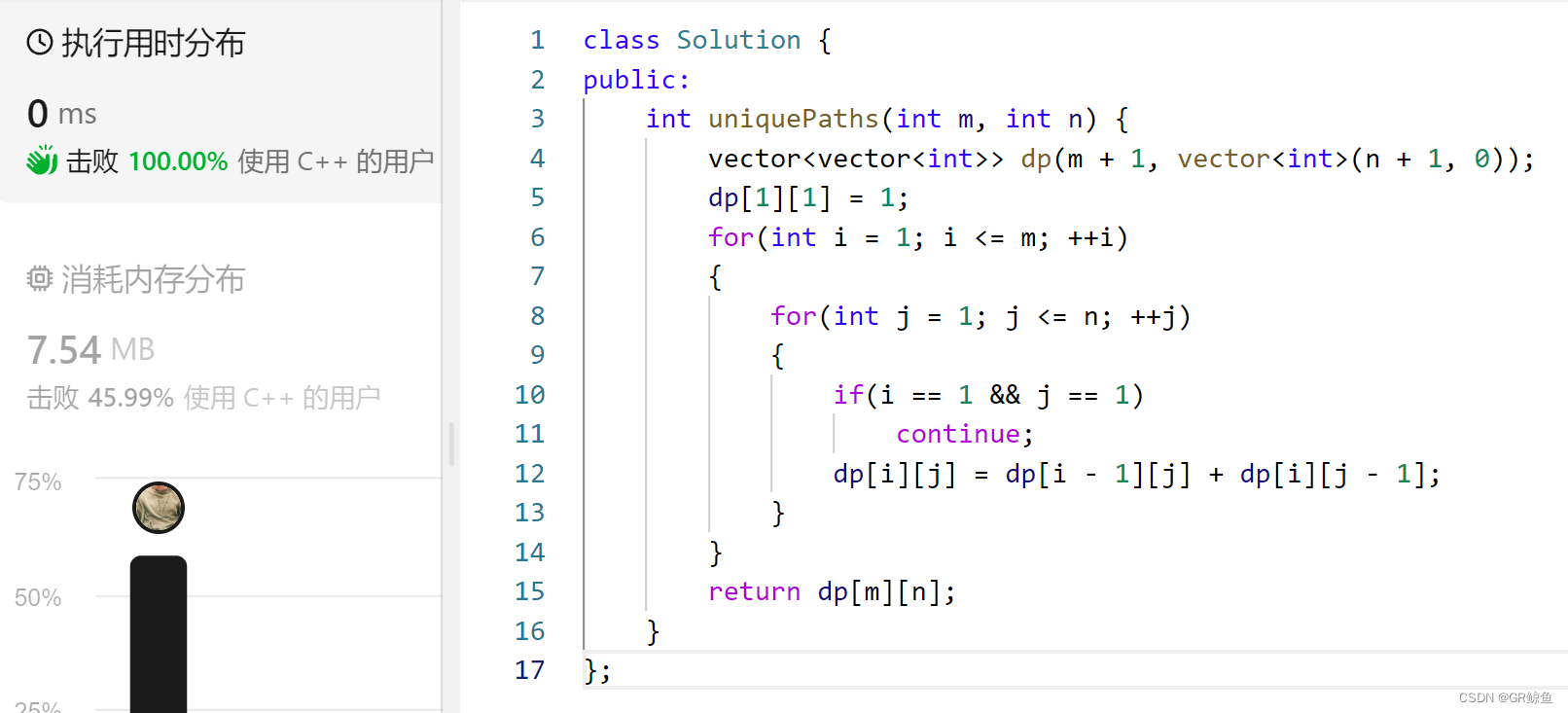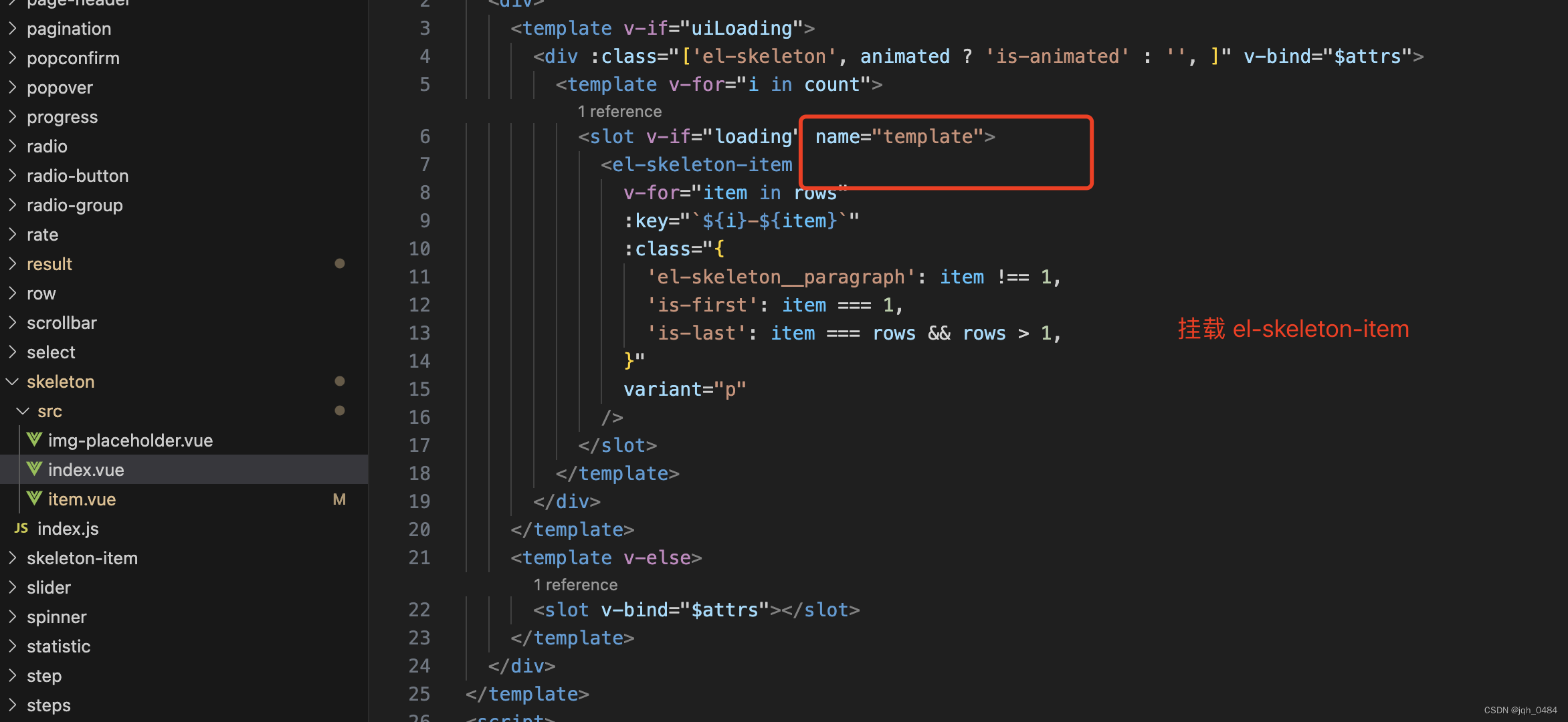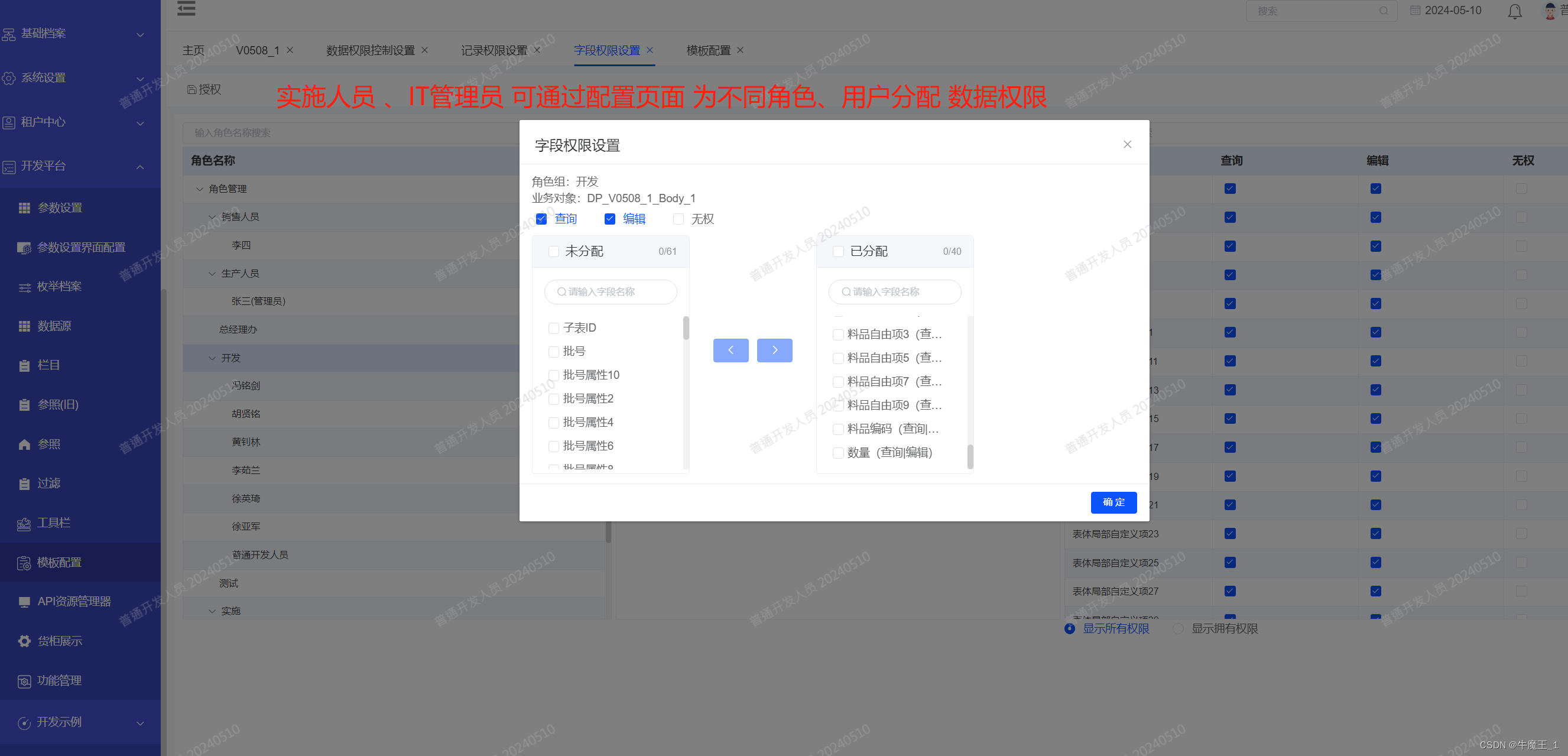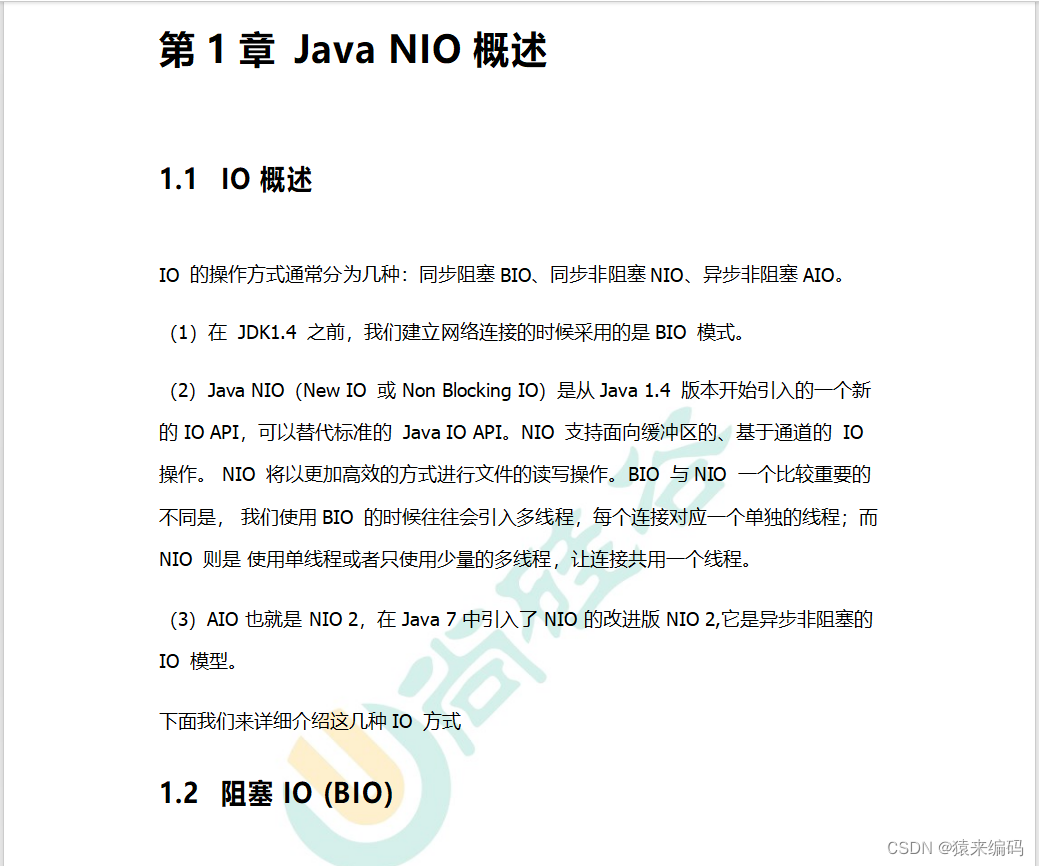fabric搭建生产网络
一、生成组织结构与身份证书
解包 hyperledger-fabric-linux-amd64-2.5.0.tar.gz
1.1、crypto-config.yaml配置文件
./bin/cryptogen showtemplate > crypto-config.yaml
将crypto-config.yaml内容修改为:
# ---------------------------------------------------------------------------
# "OrdererOrgs" - Definition of organizations managing orderer nodes
# ---------------------------------------------------------------------------
OrdererOrgs:
# ---------------------------------------------------------------------------
# Orderer
# ---------------------------------------------------------------------------
- Name: Orderer
Domain: example.com
EnableNodeOUs: true
# ---------------------------------------------------------------------------
# "Specs" - See PeerOrgs below for complete description
# ---------------------------------------------------------------------------
Specs:
- Hostname: orderer0
- Hostname: orderer1
- Hostname: orderer2
# ---------------------------------------------------------------------------
# "PeerOrgs" - Definition of organizations managing peer nodes
# ---------------------------------------------------------------------------
PeerOrgs:
# ---------------------------------------------------------------------------
# Org1
# ---------------------------------------------------------------------------
- Name: Org1
Domain: org1.example.com
EnableNodeOUs: true
# ---------------------------------------------------------------------------
# "CA"
# ---------------------------------------------------------------------------
# Uncomment this section to enable the explicit definition of the CA for this
# organization. This entry is a Spec. See "Specs" section below for details.
# ---------------------------------------------------------------------------
# CA:
# Hostname: ca # implicitly ca.org1.example.com
# Country: US
# Province: California
# Locality: San Francisco
# OrganizationalUnit: Hyperledger Fabric
# StreetAddress: address for org # default nil
# PostalCode: postalCode for org # default nil
# ---------------------------------------------------------------------------
# "Specs"
# ---------------------------------------------------------------------------
# Uncomment this section to enable the explicit definition of hosts in your
# configuration. Most users will want to use Template, below
#
# Specs is an array of Spec entries. Each Spec entry consists of two fields:
# - Hostname: (Required) The desired hostname, sans the domain.
# - CommonName: (Optional) Specifies the template or explicit override for
# the CN. By default, this is the template:
#
# "{{.Hostname}}.{{.Domain}}"
#
# which obtains its values from the Spec.Hostname and
# Org.Domain, respectively.
# - SANS: (Optional) Specifies one or more Subject Alternative Names
# to be set in the resulting x509. Accepts template
# variables {{.Hostname}}, {{.Domain}}, {{.CommonName}}. IP
# addresses provided here will be properly recognized. Other
# values will be taken as DNS names.
# NOTE: Two implicit entries are created for you:
# - {{ .CommonName }}
# - {{ .Hostname }}
# ---------------------------------------------------------------------------
# Specs:
# - Hostname: foo # implicitly "foo.org1.example.com"
# CommonName: foo27.org5.example.com # overrides Hostname-based FQDN set above
# SANS:
# - "bar.{{.Domain}}"
# - "altfoo.{{.Domain}}"
# - "{{.Hostname}}.org6.net"
# - 172.16.10.31
# - Hostname: bar
# - Hostname: baz
# ---------------------------------------------------------------------------
# "Template"
# ---------------------------------------------------------------------------
# Allows for the definition of 1 or more hosts that are created sequentially
# from a template. By default, this looks like "peer%d" from 0 to Count-1.
# You may override the number of nodes (Count), the starting index (Start)
# or the template used to construct the name (Hostname).
#
# Note: Template and Specs are not mutually exclusive. You may define both
# sections and the aggregate nodes will be created for you. Take care with
# name collisions
# ---------------------------------------------------------------------------
Template:
Count: 2
# Start: 5
# Hostname: {{.Prefix}}{{.Index}} # default
# SANS:
# - "{{.Hostname}}.alt.{{.Domain}}"
# ---------------------------------------------------------------------------
# "Users"
# ---------------------------------------------------------------------------
# Count: The number of user accounts _in addition_ to Admin
# ---------------------------------------------------------------------------
Users:
Count: 1
# ---------------------------------------------------------------------------
# Org2: See "Org1" for full specification
# ---------------------------------------------------------------------------
- Name: Org2
Domain: org2.example.com
EnableNodeOUs: true
Template:
Count: 2
Users:
Count: 1
1.2、生成组织结构及身份证书
./bin/cryptogen generate --config=./crypto-config.yaml
执行完该命令后就会在当前目录crypto-config文件夹,里边包括相关的结果及证书,我们可以用tree命令看详细情况,

二、生成其他配置文件
2.1、configtx.yaml文件 。
Organizations:
- &OrdererOrg
Name: OrdererOrg
SkipAsForeign: false
ID: OrdererMSP
MSPDir: /opt/gopath/src/github.com/hyperledger/test/crypto-config/ordererOrganizations/example.com/msp
Policies:
Readers:
Type: Signature
Rule: "OR('OrdererMSP.member')"
Writers:
Type: Signature
Rule: "OR('OrdererMSP.member')"
Admins:
Type: Signature
Rule: "OR('OrdererMSP.admin')"
Endorsement:
Type: Signature
Rule: "OR('OrdererMSP.member')"
OrdererEndpoints:
- orderer0.example.com:7050
- orderer1.example.com:8050
- orderer2.example.com:9050
- &Org1
Name: Org1MSP
ID: Org1MSP
MSPDir: /opt/gopath/src/github.com/hyperledger/test/crypto-config/peerOrganizations/org1.example.com/msp
Policies:
Readers:
Type: Signature
Rule: "OR('Org1MSP.admin', 'Org1MSP.peer', 'Org1MSP.client')"
Writers:
Type: Signature
Rule: "OR('Org1MSP.admin', 'Org1MSP.client')"
Admins:
Type: Signature
Rule: "OR('Org1MSP.admin')"
Endorsement:
Type: Signature
Rule: "OR('Org1MSP.peer')"
AnchorPeers:
- Host: peer0.org1.example.com
Port: 7051
- &Org2
Name: Org2MSP
ID: Org2MSP
MSPDir: /opt/gopath/src/github.com/hyperledger/test/crypto-config/peerOrganizations/org2.example.com/msp
Policies:
Readers:
Type: Signature
Rule: "OR('Org2MSP.admin', 'Org2MSP.peer', 'Org2MSP.client')"
Writers:
Type: Signature
Rule: "OR('Org2MSP.admin', 'Org2MSP.client')"
Admins:
Type: Signature
Rule: "OR('Org2MSP.admin')"
Endorsement:
Type: Signature
Rule: "OR('Org2MSP.peer')"
AnchorPeers:
- Host: peer0.org2.example.com
Port: 9051
Capabilities:
Channel: &ChannelCapabilities
V2_0: true
Orderer: &OrdererCapabilities
V2_0: true
Application: &ApplicationCapabilities
V2_5: true
Application: &ApplicationDefaults
ACLs: &ACLsDefault
_lifecycle/CheckCommitReadiness: /Channel/Application/Writers
_lifecycle/CommitChaincodeDefinition: /Channel/Application/Writers
_lifecycle/QueryChaincodeDefinition: /Channel/Application/Writers
_lifecycle/QueryChaincodeDefinitions: /Channel/Application/Writers
lscc/ChaincodeExists: /Channel/Application/Readers
lscc/GetDeploymentSpec: /Channel/Application/Readers
lscc/GetChaincodeData: /Channel/Application/Readers
lscc/GetInstantiatedChaincodes: /Channel/Application/Readers
qscc/GetChainInfo: /Channel/Application/Readers
qscc/GetBlockByNumber: /Channel/Application/Readers
qscc/GetBlockByHash: /Channel/Application/Readers
qscc/GetTransactionByID: /Channel/Application/Readers
qscc/GetBlockByTxID: /Channel/Application/Readers
cscc/GetConfigBlock: /Channel/Application/Readers
cscc/GetChannelConfig: /Channel/Application/Readers
peer/Propose: /Channel/Application/Writers
peer/ChaincodeToChaincode: /Channel/Application/Writers
event/Block: /Channel/Application/Readers
event/FilteredBlock: /Channel/Application/Readers
Organizations:
Policies: &ApplicationDefaultPolicies
LifecycleEndorsement:
Type: ImplicitMeta
Rule: "MAJORITY Endorsement"
Endorsement:
Type: ImplicitMeta
Rule: "MAJORITY Endorsement"
Readers:
Type: ImplicitMeta
Rule: "ANY Readers"
Writers:
Type: ImplicitMeta
Rule: "ANY Writers"
Admins:
Type: ImplicitMeta
Rule: "MAJORITY Admins"
Capabilities:
<<: *ApplicationCapabilities
Orderer: &OrdererDefaults
OrdererType: etcdraft
Addresses:
- orderer0.example.com:7050
- orderer1.example.com:8050
- orderer2.example.com:9050
BatchTimeout: 2s
BatchSize:
MaxMessageCount: 500
AbsoluteMaxBytes: 10 MB
PreferredMaxBytes: 2 MB
MaxChannels: 0
Kafka:
Brokers:
- kafka0:9092
- kafka1:9092
- kafka2:9092
EtcdRaft:
Consenters:
- Host: orderer0.example.com
Port: 7050
ClientTLSCert: /opt/gopath/src/github.com/hyperledger/test/crypto-config/ordererOrganizations/example.com/orderers/orderer0.example.com/tls/server.crt
ServerTLSCert: /opt/gopath/src/github.com/hyperledger/test/crypto-config/ordererOrganizations/example.com/orderers/orderer0.example.com/tls/server.crt
- Host: orderer1.example.com
Port: 8050
ClientTLSCert: /opt/gopath/src/github.com/hyperledger/test/crypto-config/ordererOrganizations/example.com/orderers/orderer1.example.com/tls/server.crt
ServerTLSCert: /opt/gopath/src/github.com/hyperledger/test/crypto-config/ordererOrganizations/example.com/orderers/orderer1.example.com/tls/server.crt
- Host: orderer2.example.com
Port: 9050
ClientTLSCert: /opt/gopath/src/github.com/hyperledger/test/crypto-config/ordererOrganizations/example.com/orderers/orderer2.example.com/tls/server.crt
ServerTLSCert: /opt/gopath/src/github.com/hyperledger/test/crypto-config/ordererOrganizations/example.com/orderers/orderer2.example.com/tls/server.crt
Options:
TickInterval: 500ms
ElectionTick: 10
HeartbeatTick: 1
MaxInflightBlocks: 5
SnapshotIntervalSize: 16 MB
Organizations:
Policies:
Readers:
Type: ImplicitMeta
Rule: "ANY Readers"
Writers:
Type: ImplicitMeta
Rule: "ANY Writers"
Admins:
Type: ImplicitMeta
Rule: "MAJORITY Admins"
BlockValidation:
Type: ImplicitMeta
Rule: "ANY Writers"
Capabilities:
<<: *OrdererCapabilities
Channel: &ChannelDefaults
Policies:
Readers:
Type: ImplicitMeta
Rule: "ANY Readers"
Writers:
Type: ImplicitMeta
Rule: "ANY Writers"
Admins:
Type: ImplicitMeta
Rule: "MAJORITY Admins
Capabilities:
<<: *ChannelCapabilities
Profiles:
TwoOrgsOrdererGenesis:
<<: *ChannelDefaults
Orderer:
<<: *OrdererDefaults
Organizations:
- <<: *OrdererOrg
Capabilities:
<<: *OrdererCapabilities
Consortiums:
SampleConsortium:
Organizations:
- <<: *Org1
- <<: *Org2
TwoOrgsChannel:
Consortium: SampleConsortium
<<: *ChannelDefaults
Application:
<<: *ApplicationDefaults
Organizations:
- <<: *Org1
- <<: *Org2
Capabilities:
<<: *ApplicationCapabilities
2.2、Orderer服务启动初始区块创建
这一步使用到的工具为configtxgen,关于详细使用情况我们用help即可查看,生成配置文件的命令如下:
root@ljh-testhost:/opt/gopath/src/github.com/hyperledger/test# ./bin/configtxgen -configPath ./config -profile TwoOrgsOrdererGenesis -outputBlock ./channel-artifacts/genesis.block --channelID mychannel

2.3、通道创始文件
root@ljh-testhost:/opt/gopath/src/github.com/hyperledger/test# ./bin/configtxgen -configPath ./config -profile TwoOrgsChannel -outputCreateChannelTx ./channel-artifacts/testchannel.tx -channelID testchannel

2.4、生成锚节点更新配置文件
root@ljh-testhost:/opt/gopath/src/github.com/hyperledger/test# ./bin/configtxgen -configPath ./config -profile TwoOrgsChannel -outputAnchorPeersUpdate ./channel-artifacts/Org1MSPanchors.tx -channelID testchannel -asOrg Org1MSP
root@ljh-testhost:/opt/gopath/src/github.com/hyperledger/test# ./bin/configtxgen -configPath ./config -profile TwoOrgsChannel -outputAnchorPeersUpdate ./channel-artifacts/Org2MSPanchors.tx -channelID testchannel -asOrg Org2MSP

修改config/core.yaml文件:
peer:
id: peer0.org1.example.com
networkId: dev
listenAddress: 192.168.134.167:7051
chaincodeListenAddress: 192.168.134.167:7052
chaincodeAddress: 192.168.134.167:7052
address: 192.168.134.167:7051
addressAutoDetect: false
gateway:
enabled: true
endorsementTimeout: 30s
broadcastTimeout: 30s
dialTimeout: 2m
keepalive:
interval: 7200s
timeout: 20s
minInterval: 60s
client:
interval: 60s
timeout: 20s
deliveryClient:
interval: 60s
timeout: 20s
gossip:
bootstrap: 192.168.134.167:7051
useLeaderElection: false
orgLeader: true
membershipTrackerInterval: 5s
endpoint:
maxBlockCountToStore: 10
maxPropagationBurstLatency: 10ms
maxPropagationBurstSize: 10
propagateIterations: 1
propagatePeerNum: 3
pullInterval: 4s
pullPeerNum: 3
requestStateInfoInterval: 4s
publishStateInfoInterval: 4s
stateInfoRetentionInterval:
publishCertPeriod: 10s
skipBlockVerification: false
dialTimeout: 3s
connTimeout: 2s
recvBuffSize: 20
sendBuffSize: 200
digestWaitTime: 1s
requestWaitTime: 1500ms
responseWaitTime: 2s
aliveTimeInterval: 5s
aliveExpirationTimeout: 25s
reconnectInterval: 25s
maxConnectionAttempts: 120
msgExpirationFactor: 20
externalEndpoint:
election:
startupGracePeriod: 15s
membershipSampleInterval: 1s
leaderAliveThreshold: 10s
leaderElectionDuration: 5s
pvtData:
pullRetryThreshold: 60s
transientstoreMaxBlockRetention: 1000
pushAckTimeout: 3s
btlPullMargin: 10
reconcileBatchSize: 10
reconcileSleepInterval: 1m
reconciliationEnabled: true
skipPullingInvalidTransactionsDuringCommit: false
implicitCollectionDisseminationPolicy:
requiredPeerCount: 0
maxPeerCount: 1
state:
enabled: false
checkInterval: 10s
responseTimeout: 3s
batchSize: 10
blockBufferSize: 20
maxRetries: 3
# TLS Settings
tls:
enabled: true
clientAuthRequired: false
cert:
file: /opt/gopath/src/github.com/hyperledger/test/crypto-config/peerOrganizations/org1.example.com/peers/peer0.org1.example.com/tls/server.crt
key:
file: /opt/gopath/src/github.com/hyperledger/test/crypto-config/peerOrganizations/org1.example.com/peers/peer0.org1.example.com/tls/server.key
rootcert:
file: /opt/gopath/src/github.com/hyperledger/test/crypto-config/peerOrganizations/org1.example.com/peers/peer0.org1.example.com/tls/ca.crt
clientRootCAs:
files:
- /opt/gopath/src/github.com/hyperledger/test/crypto-config/peerOrganizations/org1.example.com/peers/peer0.org1.example.com/tls/ca.crt
clientKey:
file:
clientCert:
file:
authentication:
timewindow: 15m
fileSystemPath: /var/hyperledger/production/org1-peer0
BCCSP:
Default: SW
# Settings for the SW crypto provider (i.e. when DEFAULT: SW)
SW:
Hash: SHA2
Security: 256
# Location of Key Store
FileKeyStore:
# If "", defaults to 'mspConfigPath'/keystore
KeyStore:
# Settings for the PKCS#11 crypto provider (i.e. when DEFAULT: PKCS11)
PKCS11:
# Location of the PKCS11 module library
Library:
# Token Label
Label:
# User PIN
Pin:
Hash:
Security:
SoftwareVerify:
Immutable:
AltID:
KeyIds:
mspConfigPath: /opt/gopath/src/github.com/hyperledger/test/crypto-config/peerOrganizations/org1.example.com/peers/peer0.org1.example.com/msp
localMspId: Org1MSP
# CLI common client config options
client:
# connection timeout
connTimeout: 3s
deliveryclient:
blockGossipEnabled: true
reconnectTotalTimeThreshold: 3600s
connTimeout: 3s
reConnectBackoffThreshold: 3600s
addressOverrides:
localMspType: bccsp
profile:
enabled: false
listenAddress: 0.0.0.0:6060
handlers:
authFilters:
-
name: DefaultAuth
-
name: ExpirationCheck # This filter checks identity x509 certificate expiration
decorators:
-
name: DefaultDecorator
endorsers:
escc:
name: DefaultEndorsement
library:
validators:
vscc:
name: DefaultValidation
library:
validatorPoolSize:
discovery:
enabled: true
authCacheEnabled: true
authCacheMaxSize: 1000
authCachePurgeRetentionRatio: 0.75
orgMembersAllowedAccess: false
limits:
concurrency:
endorserService: 2500
deliverService: 2500
gatewayService: 500
maxRecvMsgSize: 104857600
maxSendMsgSize: 104857600
vm:
endpoint: unix:///var/run/docker.sock
docker:
tls:
enabled: false
ca:
file: docker/ca.crt
cert:
file: docker/tls.crt
key:
file: docker/tls.key
attachStdout: false
hostConfig:
NetworkMode: host
Dns:
# - 192.168.0.1
LogConfig:
Type: json-file
Config:
max-size: "50m"
max-file: "5"
Memory: 2147483648
chaincode:
id:
path:
name:
# Generic builder environment, suitable for most chaincode types
builder: $(DOCKER_NS)/fabric-ccenv:$(TWO_DIGIT_VERSION)
pull: false
golang:
# golang will never need more than baseos
runtime: $(DOCKER_NS)/fabric-baseos:$(TWO_DIGIT_VERSION)
dynamicLink: false
java:
runtime: $(DOCKER_NS)/fabric-javaenv:$(TWO_DIGIT_VERSION)
node:
# This is an image based on node:$(NODE_VER)-alpine
runtime: $(DOCKER_NS)/fabric-nodeenv:$(TWO_DIGIT_VERSION)
externalBuilders:
- name: ccaas_builder
path: /opt/hyperledger/ccaas_builder
propagateEnvironment:
- CHAINCODE_AS_A_SERVICE_BUILDER_CONFIG
# The maximum duration to wait for the chaincode build and install process
# to complete.
installTimeout: 300s
startuptimeout: 300s
executetimeout: 30s
mode: net
keepalive: 0
system:
_lifecycle: enable
cscc: enable
lscc: enable
qscc: enable
# Logging section for the chaincode container
logging:
# Default level for all loggers within the chaincode container
level: info
# Override default level for the 'shim' logger
shim: warning
# Format for the chaincode container logs
format: '%{color}%{time:2006-01-02 15:04:05.000 MST} [%{module}] %{shortfunc} -> %{level:.4s} %{id:03x}%{color:reset} %{message}'
ledger:
blockchain:
state:
stateDatabase: goleveldb
totalQueryLimit: 100000
couchDBConfig:
couchDBAddress: 127.0.0.1:5984
username:
password:
maxRetries: 3
maxRetriesOnStartup: 10
requestTimeout: 35s
internalQueryLimit: 1000
maxBatchUpdateSize: 1000
createGlobalChangesDB: false
cacheSize: 64
history:
enableHistoryDatabase: true
pvtdataStore:
collElgProcMaxDbBatchSize: 5000
collElgProcDbBatchesInterval: 1000
deprioritizedDataReconcilerInterval: 60m
purgeInterval: 100
purgedKeyAuditLogging: true
snapshots:
rootDir: /var/hyperledger/production/snapshots/org1-peer0
operations:
listenAddress: 127.0.0.1:9446
tls:
enabled: false
cert:
file:
key:
file:
clientAuthRequired: false
clientRootCAs:
files: []
metrics:
provider: disabled
statsd:
network: udp
address: 127.0.0.1:8125
writeInterval: 10s
prefix:
三.搭建网络
1.普通安装方法
搭建安装orderer节点

| 节点 | 宿主机 | Hosts | 端口 |
|---|---|---|---|
| orderer0 | 192.168.134.167 | orderer0.example.com | 7050,8443,9443 |
| orderer1 | 192.168.134.167 | orderer1.example.com | 8050,8444,9444 |
| orderer2 | 192.168.134.167 | orderer2.example.com | 9050,8445,9445 |
| org1-peer0 | 192.168.134.167 | peer0.org1.example.com | 7051,7052,9446,8125 |
| org1-peer1 | 192.168.134.167 | peer1.org1.example.com | 8051,7053,9447,8126 |
| org2-peer0 | 192.168.134.167 | peer0.org2.example.com | 9051,7054,9448,8127 |
| org2-peer1 | 192.168.134.167 | peer1.org2.example.com | 10051,7055,9449,8128 |
配置域名解析
root@ljh-testhost:# cat /etc/hosts
192.168.134.167 orderer0.example.com oerderer1.example.com orderer2.example.com
192.168.134.167 peer0.org1.example.com
192.168.134.167 peer1.org1.example.com
192.168.134.167 peer0.org2.example.com
192.168.134.167 peer1.org2.example.com
为了方便操作,创建目录将要使用的文件拷贝进来
root@ljh-testhost:/opt/gopath/src/github.com/hyperledger/test# mkdir orderer0
root@ljh-testhost:/opt/gopath/src/github.com/hyperledger/test# cp bin/orderer config/orderer.yaml orderer0/
修改orderer.yaml文件:
---
General:
ListenAddress: 192.1168.134.167
ListenPort: 7050
TLS:
Enabled: true
PrivateKey: /opt/gopath/src/github.com/hyperledger/test/crypto-config/ordererOrganizations/example.com/orderers/orderer0.example.com/tls/server.key
Certificate: /opt/gopath/src/github.com/hyperledger/test/crypto-config/ordererOrganizations/example.com/orderers/orderer0.example.com/tls/server.crt
RootCAs:
- /opt/gopath/src/github.com/hyperledger/test/crypto-config/ordererOrganizations/example.com/orderers/orderer0.example.com/tls/ca.crt
ClientAuthRequired: false
ClientRootCAs:
Keepalive:
ServerMinInterval: 60s
ServerInterval: 7200s
ServerTimeout: 20s
MaxRecvMsgSize: 104857600
MaxSendMsgSize: 104857600
Cluster:
SendBufferSize: 100
ClientCertificate: /opt/gopath/src/github.com/hyperledger/test/crypto-config/ordererOrganizations/example.com/orderers/orderer0.example.com/tls/server.crt
ClientPrivateKey: /opt/gopath/src/github.com/hyperledger/test/crypto-config/ordererOrganizations/example.com/orderers/orderer0.example.com/tls/server.key
ListenPort:
ListenAddress:
ServerCertificate:
ServerPrivateKey:
BootstrapMethod: file
BootstrapFile: /opt/gopath/src/github.com/hyperledger/test/channel-artifacts/genesis.block
LocalMSPDir: /opt/gopath/src/github.com/hyperledger/test/crypto-config/ordererOrganizations/example.com/orderers/orderer0.example.com/msp
LocalMSPID: OrdererMSP
Profile:
Enabled: false
Address: 0.0.0.0:6060
BCCSP:
Default: SW
SW:
Hash: SHA2
Security: 256
FileKeyStore:
KeyStore:
PKCS11:
Library:
Label:
Pin:
Hash:
Security:
FileKeyStore:
KeyStore:
Authentication:
TimeWindow: 15m
FileLedger:
# Location: The directory to store the blocks in.
Location: /var/hyperledger/production/orderer0
Kafka:
Retry:
ShortInterval: 5s
ShortTotal: 10m
LongInterval: 5m
LongTotal: 12h
NetworkTimeouts:
DialTimeout: 10s
ReadTimeout: 10s
WriteTimeout: 10s
Metadata:
RetryBackoff: 250ms
RetryMax: 3
Producer:
RetryBackoff: 100ms
RetryMax: 3
Consumer:
RetryBackoff: 2s
Topic:
ReplicationFactor: 3
Verbose: false
TLS:
Enabled: false
PrivateKey:
Certificate:
RootCAs:
SASLPlain:
Enabled: false
User:
Password:
Version:
Debug:
BroadcastTraceDir:
DeliverTraceDir:
Operations:
ListenAddress: 127.0.0.1:8443
TLS:
Enabled: false
Certificate:
PrivateKey:
ClientAuthRequired: false
ClientRootCAs: []
Metrics:
Provider: disabled
Statsd:
Network: udp
Address: 127.0.0.1:8125
WriteInterval: 30s
Prefix:
Admin:
ListenAddress: 127.0.0.1:9443
TLS:
Enabled: false
Certificate:
PrivateKey:
ClientAuthRequired: true
ClientRootCAs: []
ChannelParticipation:
Enabled: false
MaxRequestBodySize: 1 MB
Consensus:
WALDir: /var/hyperledger/production/orderer0/etcdraft/wal
SnapDir: /var/hyperledger/production/orderer0/etcdraft/snapshot
启动orderer0节点并查看:
# nohup ./orderer start > orderer-log.log 2>&1 &
# tail -f orderer-log.log
2024-04-10 16:50:52.656 CST 0044 INFO [orderer.consensus.etcdraft] hup -> 1 is starting a new election at term 1 channel=mychannel node=1
2024-04-10 16:50:52.656 CST 0045 INFO [orderer.consensus.etcdraft] becomePreCandidate -> 1 became pre-candidate at term 1 channel=mychannel node=1
2024-04-10 16:50:52.656 CST 0046 INFO [orderer.consensus.etcdraft] poll -> 1 received MsgPreVoteResp from 1 at term 1 channel=mychannel node=1
2024-04-10 16:50:52.656 CST 0047 INFO [orderer.consensus.etcdraft] campaign -> 1 [logterm: 1, index: 3] sent MsgPreVote request to 2 at term 1 channel=mychannel node=1
2024-04-10 16:50:52.656 CST 0048 INFO [orderer.consensus.etcdraft] campaign -> 1 [logterm: 1, index: 3] sent MsgPreVote request to 3 at term 1 channel=mychannel node=1
以此类推orderer1和orderer2方法相同,需要修改端口和相关路径。
二进制安装peer节点
部署orh1-peer1节点
确保所有orderer节点启动再部署peer节点。
# mkdir org1-peer org2-peer
# cd org1-peer/
# mkdir peer0 peer1
# cd org2-peer/
# mkdir peer0 peer1
将需要的文件拷贝到peer0
root@ljh-testhost:/opt/gopath/src/github.com/hyperledger/test/org1-peer/peer0# cp ../../bin/peer .
root@ljh-testhost:/opt/gopath/src/github.com/hyperledger/test/org1-peer/peer0# cp ../../config/core.yaml .
修改core.yaml文件内容如下:
peer:
id: peer0.org1.example.com
networkId: dev
listenAddress: 192.168.134.167:7051
chaincodeListenAddress: 192.168.134.167:7052
chaincodeAddress: 192.168.134.167:7052
address: 192.168.134.167:7051
addressAutoDetect: false
gateway:
enabled: true
endorsementTimeout: 30s
broadcastTimeout: 30s
dialTimeout: 2m
keepalive:
interval: 7200s
timeout: 20s
minInterval: 60s
client:
interval: 60s
timeout: 20s
deliveryClient:
interval: 60s
timeout: 20s
gossip:
bootstrap: 192.168.134.167:7051
useLeaderElection: false
orgLeader: true
membershipTrackerInterval: 5s
endpoint:
maxBlockCountToStore: 10
maxPropagationBurstLatency: 10ms
maxPropagationBurstSize: 10
propagateIterations: 1
propagatePeerNum: 3
pullInterval: 4s
pullPeerNum: 3
requestStateInfoInterval: 4s
publishStateInfoInterval: 4s
stateInfoRetentionInterval:
publishCertPeriod: 10s
skipBlockVerification: false
dialTimeout: 3s
connTimeout: 2s
recvBuffSize: 20
sendBuffSize: 200
digestWaitTime: 1s
requestWaitTime: 1500ms
responseWaitTime: 2s
aliveTimeInterval: 5s
aliveExpirationTimeout: 25s
reconnectInterval: 25s
maxConnectionAttempts: 120
msgExpirationFactor: 20
externalEndpoint:
election:
startupGracePeriod: 15s
membershipSampleInterval: 1s
leaderAliveThreshold: 10s
leaderElectionDuration: 5s
pvtData:
pullRetryThreshold: 60s
transientstoreMaxBlockRetention: 1000
pushAckTimeout: 3s
btlPullMargin: 10
reconcileBatchSize: 10
reconcileSleepInterval: 1m
reconciliationEnabled: true
skipPullingInvalidTransactionsDuringCommit: false
implicitCollectionDisseminationPolicy:
requiredPeerCount: 0
maxPeerCount: 1
state:
enabled: false
checkInterval: 10s
responseTimeout: 3s
batchSize: 10
blockBufferSize: 20
maxRetries: 3
# TLS Settings
tls:
enabled: true
clientAuthRequired: false
cert:
file: /opt/gopath/src/github.com/hyperledger/test/crypto-config/peerOrganizations/org1.example.com/peers/peer0.org1.example.com/tls/server.crt
key:
file: /opt/gopath/src/github.com/hyperledger/test/crypto-config/peerOrganizations/org1.example.com/peers/peer0.org1.example.com/tls/server.key
rootcert:
file: /opt/gopath/src/github.com/hyperledger/test/crypto-config/peerOrganizations/org1.example.com/peers/peer0.org1.example.com/tls/ca.crt
clientRootCAs:
files:
- /opt/gopath/src/github.com/hyperledger/test/crypto-config/peerOrganizations/org1.example.com/peers/peer0.org1.example.com/tls/ca.crt
clientKey:
file:
clientCert:
file:
authentication:
timewindow: 15m
fileSystemPath: /var/hyperledger/production/org1-peer0
BCCSP:
Default: SW
# Settings for the SW crypto provider (i.e. when DEFAULT: SW)
SW:
Hash: SHA2
Security: 256
# Location of Key Store
FileKeyStore:
# If "", defaults to 'mspConfigPath'/keystore
KeyStore:
# Settings for the PKCS#11 crypto provider (i.e. when DEFAULT: PKCS11)
PKCS11:
# Location of the PKCS11 module library
Library:
# Token Label
Label:
# User PIN
Pin:
Hash:
Security:
SoftwareVerify:
Immutable:
AltID:
KeyIds:
mspConfigPath: /opt/gopath/src/github.com/hyperledger/test/crypto-config/peerOrganizations/org1.example.com/peers/peer0.org1.example.com/msp
localMspId: Org1MSP
# CLI common client config options
client:
# connection timeout
connTimeout: 3s
deliveryclient:
blockGossipEnabled: true
reconnectTotalTimeThreshold: 3600s
connTimeout: 3s
reConnectBackoffThreshold: 3600s
addressOverrides:
localMspType: bccsp
profile:
enabled: false
listenAddress: 0.0.0.0:6060
handlers:
authFilters:
-
name: DefaultAuth
-
name: ExpirationCheck # This filter checks identity x509 certificate expiration
decorators:
-
name: DefaultDecorator
endorsers:
escc:
name: DefaultEndorsement
library:
validators:
vscc:
name: DefaultValidation
library:
validatorPoolSize:
discovery:
enabled: true
authCacheEnabled: true
authCacheMaxSize: 1000
authCachePurgeRetentionRatio: 0.75
orgMembersAllowedAccess: false
limits:
concurrency:
endorserService: 2500
deliverService: 2500
gatewayService: 500
maxRecvMsgSize: 104857600
maxSendMsgSize: 104857600
vm:
endpoint: unix:///var/run/docker.sock
docker:
tls:
enabled: false
ca:
file: docker/ca.crt
cert:
file: docker/tls.crt
key:
file: docker/tls.key
attachStdout: false
hostConfig:
NetworkMode: host
Dns:
# - 192.168.0.1
LogConfig:
Type: json-file
Config:
max-size: "50m"
max-file: "5"
Memory: 2147483648
chaincode:
id:
path:
name:
# Generic builder environment, suitable for most chaincode types
builder: $(DOCKER_NS)/fabric-ccenv:$(TWO_DIGIT_VERSION)
pull: false
golang:
# golang will never need more than baseos
runtime: $(DOCKER_NS)/fabric-baseos:$(TWO_DIGIT_VERSION)
dynamicLink: false
java:
runtime: $(DOCKER_NS)/fabric-javaenv:$(TWO_DIGIT_VERSION)
node:
# This is an image based on node:$(NODE_VER)-alpine
runtime: $(DOCKER_NS)/fabric-nodeenv:$(TWO_DIGIT_VERSION)
externalBuilders:
- name: ccaas_builder
path: /opt/hyperledger/ccaas_builder
propagateEnvironment:
- CHAINCODE_AS_A_SERVICE_BUILDER_CONFIG
# The maximum duration to wait for the chaincode build and install process
# to complete.
installTimeout: 300s
startuptimeout: 300s
executetimeout: 30s
mode: net
keepalive: 0
system:
_lifecycle: enable
cscc: enable
lscc: enable
qscc: enable
# Logging section for the chaincode container
logging:
# Default level for all loggers within the chaincode container
level: info
# Override default level for the 'shim' logger
shim: warning
# Format for the chaincode container logs
format: '%{color}%{time:2006-01-02 15:04:05.000 MST} [%{module}] %{shortfunc} -> %{level:.4s} %{id:03x}%{color:reset} %{message}'
ledger:
blockchain:
state:
stateDatabase: goleveldb
totalQueryLimit: 100000
couchDBConfig:
couchDBAddress: 127.0.0.1:5984
username:
password:
maxRetries: 3
maxRetriesOnStartup: 10
requestTimeout: 35s
internalQueryLimit: 1000
maxBatchUpdateSize: 1000
createGlobalChangesDB: false
cacheSize: 64
history:
enableHistoryDatabase: true
pvtdataStore:
collElgProcMaxDbBatchSize: 5000
collElgProcDbBatchesInterval: 1000
deprioritizedDataReconcilerInterval: 60m
purgeInterval: 100
purgedKeyAuditLogging: true
snapshots:
rootDir: /var/hyperledger/production/snapshots/org1-peer0
operations:
listenAddress: 127.0.0.1:9446
tls:
enabled: false
cert:
file:
key:
file:
clientAuthRequired: false
clientRootCAs:
files: []
metrics:
provider: disabled
statsd:
network: udp
address: 127.0.0.1:8125
writeInterval: 10s
prefix:
启动org1-peer0节点
# nohup ./peer node start > org1-peer0.log 2>&1 &
# tail -f org1-peer0.log
2024-04-11 11:13:25.479 CST 001b INFO [sccapi] DeploySysCC -> deploying system chaincode 'qscc'
2024-04-11 11:13:25.479 CST 001c INFO [sccapi] DeploySysCC -> deploying system chaincode '_lifecycle'
2024-04-11 11:13:25.479 CST 001d INFO [nodeCmd] serve -> Deployed system chaincodes
2024-04-11 11:13:25.479 CST 001e INFO [discovery] NewService -> Created with config TLS: true, authCacheMaxSize: 1000, authCachePurgeRatio: 0.750000
2024-04-11 11:13:25.479 CST 001f INFO [nodeCmd] serve -> Discovery service activated
2024-04-11 11:13:25.479 CST 0020 INFO [nodeCmd] serve -> Starting peer with Gateway enabled
2024-04-11 11:13:25.479 CST 0021 INFO [nodeCmd] serve -> Starting peer with ID=[peer0.org1.example.com], network ID=[dev], address=[192.168.134.167:7051]
2024-04-11 11:13:25.479 CST 0022 INFO [nodeCmd] serve -> Started peer with ID=[peer0.org1.example.com], network ID=[dev], address=[192.168.134.167:7051]
2024-04-11 11:13:25.479 CST 0023 INFO [kvledger] LoadPreResetHeight -> Loading prereset height from path [/var/hyperledger/production/org1-peer0/ledgersData/chains]
2024-04-11 11:13:25.479 CST 0024 INFO [blkstorage] preResetHtFiles -> No active channels passed
其余peer节点需要修改端口,文件路径。
创建通道
root@ljh-testhost:/opt/gopath/src/github.com/hyperledger/test/org1-peer/peer0# export CORE_PEER_LOCALMSPID=Org1MSP
root@ljh-testhost:/opt/gopath/src/github.com/hyperledger/test/org1-peer/peer0# export CORE_PEER_MSPCONFIGPATH=/opt/gopath/src/github.com/hyperledger/test/crypto-config/peerOrganizations/org1.example.com/users/Admin@org1.example.com/msp
root@ljh-testhost:/opt/gopath/src/github.com/hyperledger/test/org2-peer/peer1# ./peer channel create -o orderer0.example.com:7050 -c testchannel -f "/opt/gopath/src/github.com/hyperledger/test/channel-artifacts/mychannel.tx" --timeout "30s" --tls --cafile /opt/gopath/src/github.com/hyperledger/test/crypto-config/ordererOrganizations/example.com/orderers/orderer0.example.com/msp/tlscacerts/tlsca.example.com-cert.pem

创建成功后会在当前路径下生成 testchannel.block 文件。将文件移动到/opt/gopath/src/github.com/hyperledger/test/channel-artifacts/
root@ljh-testhost:/opt/gopath/src/github.com/hyperledger/test/org2-peer/peer1# cp testchannel.block /opt/gopath/src/github.com/hyperledger/test/channel-artifacts/
加入通道
org1-peer0 加入通道:
root@ljh-testhost:/opt/gopath/src/github.com/hyperledger/test/org2-peer/peer1# export CORE_PEER_TLS_ENABLED=true
export CORE_PEER_LOCALMSPID="Org1MSP"
root@ljh-testhost:/opt/gopath/src/github.com/hyperledger/test/org2-peer/peer1# export CORE_PEER_TLS_ROOTCERT_FILE=/opt/gopath/src/github.com/hyperledger/test/crypto-config/peerOrganizations/org1.example.com/peers/peer0.org1.example.com/tls/ca.crt
root@ljh-testhost:/opt/gopath/src/github.com/hyperledger/test/org2-peer/peer1# export CORE_PEER_MSPCONFIGPATH=/opt/gopath/src/github.com/hyperledger/test/crypto-config/peerOrganizations/org1.example.com/users/Admin@org1.example.com/msp
root@ljh-testhost:/opt/gopath/src/github.com/hyperledger/test/org2-peer/peer1# export CORE_PEER_ADDRESS=peer0.org1.example.com:7051
root@ljh-testhost:/opt/gopath/src/github.com/hyperledger/test/org2-peer/peer1# ./peer channel join -b /opt/gopath/src/github.com/hyperledger/test/channel-artifacts/testchannel.block

节点加入成功。
其余节点只需要修改文件位置和端口。
将所有的的节点加入后查看 peer 节点加入的通道:
./peer channel list

2.Docker方式搭建
所需要的镜像:

前面已经生成过相关文件了,所以直接配置docker-compose文件。
我们将orderer节点和peer节点的docker-compose文件写在一起。在/opt/gopath/src/github.com/hyperledger/test下创建docker-com-op.yaml。
docker-com-op.yaml内容如下:
version: '2.0'
services:
cli:
image: hyperledger/fabric-tools:2.5
restart: always
container_name: fabric-cli
hostname: fabric-cli
tty: true
extra_hosts:
- "orderer0.example.com:192.168.134.167"
- "orderer1.example.com:192.168.134.167"
- "orderer2.example.com:192.168.134.167"
- "peer0.org1.example.com:192.168.134.167"
- "peer1.org1.example.com:192.168.134.167"
- "peer0.org2.example.com:192.168.134.167"
- "peer1.org2.example.com:192.168.134.167"
environment:
- CORE_PEER_ID=fabric-cli
- CORE_PEER_ADDRESS=peer0.org1.example.com:7051 # default to operate on peer0.org1
- CORE_PEER_LOCALMSPID=Org1MSP
- CORE_PEER_TLS_CERT_FILE=/etc/hyperledger/fabric/crypto-config/peerOrganizations/org1.example.com/peers/peer0.org1.example.com/tls/server.crt
- CORE_PEER_TLS_KEY_FILE=/etc/hyperledger/fabric/crypto-config/peerOrganizations/org1.example.com/peers/peer0.org1.example.com/tls/server.key
- CORE_PEER_TLS_ROOTCERT_FILE=/etc/hyperledger/fabric/crypto-config/peerOrganizations/org1.example.com/peers/peer0.org1.example.com/tls/ca.crt
- CORE_PEER_MSPCONFIGPATH=/etc/hyperledger/fabric/crypto-config/peerOrganizations/org1.example.com/users/Admin@org1.example.com/msp
- FABRIC_LOGGING_SPEC=DEBUG
- FABRIC_LOGGING_FORMAT=%{color}[%{id:03x} %{time:01-02 15:04:05.00 MST}] [%{module}] %{shortfunc} -> %{level:.4s}%{color:reset} %{message}
- CORE_PEER_TLS_ENABLED=true # to enable TLS, change to true
- ORDERER_CA=/etc/hyperledger/fabric/crypto-config/ordererOrganizations/example.com/orderers/orderer0.example.com/msp/tlscacerts/tlsca.example.com-cert.pem
volumes:
- ./crypto-config.yaml:/etc/hyperledger/fabric/crypto-config.yaml
- ./config/configtx.yaml:/etc/hyperledger/fabric/configtx.yaml
- ./crypto-config:/etc/hyperledger/fabric/crypto-config
- ./channel-artifacts:/tmp/channel-artifacts
- ./chaincodes:/etc/hyperledger/fabric/chaincodes
working_dir: /opt/gopath/src/github.com/hyperledger/fabric/peer
command: bash -c 'cd /tmp; source scripts/func.sh; while true; do sleep 20170504; done'
orderer0.example.com: # There can be multiple orderers
image: hyperledger/fabric-orderer:2.5.6
restart: always
container_name: orderer0.example.com
hostname: orderer0.example.com
ports:
- "7050:7050"
extra_hosts:
- "orderer0.example.com:192.168.134.167"
- "orderer1.example.com:192.168.134.167"
- "orderer2.example.com:192.168.0.105"
- "peer0.org1.example.com:192.168.134.167"
- "peer1.org1.example.com:192.168.134.167"
- "peer0.org2.example.com:192.168.134.167"
- "peer1.org2.example.com:192.168.134.167"
environment:
- FABRIC_LOGGING_FORMAT="%{color}%{time:2006-01-02 15:04:05.000 MST} [%{module}] %{shortfunc} -> %{level:.4s} %{id:03x}%{color:reset} %{message}"
- ORDERER_GENERAL_LISTENADDRESS=0.0.0.0 # default: 127.0.0.1
- ORDERER_GENERAL_LISTENPORT=7050
- ORDERER_GENERAL_GENESISMETHOD=file # default: provisional
- ORDERER_GENERAL_BOOTSTRAPFILE=/etc/hyperledger/fabric/orderer.genesis.block # by default, all materials should be put under $FABRIC_CFG_PATH, which defaults to /etc/hyperledger/fabric
- ORDERER_GENERAL_LOCALMSPID=OrdererMSP # default: DEFAULT
- ORDERER_GENERAL_LOCALMSPDIR=/etc/hyperledger/fabric/msp
- ORDERER_GENERAL_LEDGERTYPE=file
#- ORDERER_GENERAL_LEDGERTYPE=json # default: file
- ORDERER_OPERATIONS_LISTENADDRESS=0.0.0.0:8443 # operation RESTful API
- ORDERER_METRICS_PROVIDER=prometheus # prometheus will pull metrics from orderer via /metrics RESTful API
#- ORDERER_RAMLEDGER_HISTORY_SIZE=100 #only useful when use ram ledger
# enabled TLS
- ORDERER_GENERAL_TLS_ENABLED=true # default: false
- ORDERER_GENERAL_TLS_PRIVATEKEY=/etc/hyperledger/fabric/tls/server.key
- ORDERER_GENERAL_TLS_CERTIFICATE=/etc/hyperledger/fabric/tls/server.crt
- ORDERER_GENERAL_TLS_ROOTCAS=[/etc/hyperledger/fabric/tls/ca.crt]
# Only required by raft mode
- ORDERER_GENERAL_CLUSTER_CLIENTPRIVATEKEY=/etc/hyperledger/fabric/tls/server.key
- ORDERER_GENERAL_CLUSTER_CLIENTCERTIFICATE=/etc/hyperledger/fabric/tls/server.crt
- ORDERER_GENERAL_CLUSTER_ROOTCAS=[/etc/hyperledger/fabric/tls/ca.crt]
- FABRIC_LOGGING_SPEC=DEBUG
volumes:
- ./crypto-config/ordererOrganizations/example.com/orderers/orderer0.example.com/msp:/etc/hyperledger/fabric/msp
- ./crypto-config/ordererOrganizations/example.com/orderers/orderer0.example.com/tls/:/etc/hyperledger/fabric/tls
- ./channel-artifacts/genesis.block:/etc/hyperledger/fabric/orderer.genesis.block
expose:
- "7050" # gRPC
- "8443" # Operation REST
command: orderer start
orderer1.example.com:
image: hyperledger/fabric-orderer:2.5.6
restart: always
container_name: orderer1.example.com
hostname: orderer1.example.com
ports:
- "8050:7050"
extra_hosts:
- "orderer0.example.com:192.168.134.167"
- "orderer1.example.com:192.168.134.167"
- "orderer2.example.com:192.168.134.167"
- "peer0.org1.example.com:192.168.134.167"
- "peer1.org1.example.com:192.168.134.167"
- "peer0.org2.example.com:192.168.134.167"
- "peer1.org2.example.com:192.168.134.167"
environment:
- FABRIC_LOGGING_SPEC=DEBUG
- FABRIC_LOGGING_FORMAT="%{color}%{time:2006-01-02 15:04:05.000 MST} [%{module}] %{shortfunc} -> %{level:.4s} %{id:03x}%{color:reset} %{message}"
- ORDERER_GENERAL_LISTENADDRESS=0.0.0.0 # default: 127.0.0.1
- ORDERER_GENERAL_LISTENPORT=7050
- ORDERER_GENERAL_GENESISMETHOD=file # default: provisional
- ORDERER_GENERAL_BOOTSTRAPFILE=/etc/hyperledger/fabric/orderer.genesis.block # by default, all materials should be put under $FABRIC_CFG_PATH, which defaults to /etc/hyperledger/fabric
- ORDERER_GENERAL_LOCALMSPID=OrdererMSP # default: DEFAULT
- ORDERER_GENERAL_LOCALMSPDIR=/etc/hyperledger/fabric/msp
- ORDERER_GENERAL_LEDGERTYPE=file
#- ORDERER_GENERAL_LEDGERTYPE=json # default: file
- ORDERER_OPERATIONS_LISTENADDRESS=0.0.0.0:8443 # operation RESTful API
- ORDERER_METRICS_PROVIDER=prometheus # prometheus will pull metrics from orderer via /metrics RESTful API
#- ORDERER_RAMLEDGER_HISTORY_SIZE=100 #only useful when use ram ledger
# enabled TLS
- ORDERER_GENERAL_TLS_ENABLED=true # default: false
- ORDERER_GENERAL_TLS_PRIVATEKEY=/etc/hyperledger/fabric/tls/server.key
- ORDERER_GENERAL_TLS_CERTIFICATE=/etc/hyperledger/fabric/tls/server.crt
- ORDERER_GENERAL_TLS_ROOTCAS=[/etc/hyperledger/fabric/tls/ca.crt]
# Only required by raft mode
- ORDERER_GENERAL_CLUSTER_CLIENTPRIVATEKEY=/etc/hyperledger/fabric/tls/server.key
- ORDERER_GENERAL_CLUSTER_CLIENTCERTIFICATE=/etc/hyperledger/fabric/tls/server.crt
- ORDERER_GENERAL_CLUSTER_ROOTCAS=[/etc/hyperledger/fabric/tls/ca.crt]
- ORDERER_GENERAL_CLUSTER_SENDBUFFERSIZE=10
volumes:
- ./crypto-config/ordererOrganizations/example.com/orderers/orderer1.example.com/msp:/etc/hyperledger/fabric/msp
- ./crypto-config/ordererOrganizations/example.com/orderers/orderer1.example.com/tls/:/etc/hyperledger/fabric/tls
- ./channel-artifacts/genesis.block:/etc/hyperledger/fabric/orderer.genesis.block
command: orderer start
orderer2.example.com:
image: hyperledger/fabric-orderer:latest
restart: always
container_name: orderer2.example.com
hostname: orderer2.example.com
ports:
- "9050:7050"
extra_hosts:
- "orderer0.example.com:192.168.134.167"
- "orderer1.example.com:192.168.134.167"
- "orderer2.example.com:192.168.134.167"
- "peer0.org1.example.com:192.168.134.167"
- "peer1.org1.example.com:192.168.134.167"
- "peer0.org2.example.com:192.168.134.167"
- "peer1.org2.example.com:192.168.134.167"
environment:
- FABRIC_LOGGING_SPEC=DEBUG # default: INFO
- FABRIC_LOGGING_FORMAT="%{color}%{time:2006-01-02 15:04:05.000 MST} [%{module}] %{shortfunc} -> %{level:.4s} %{id:03x}%{color:reset} %{message}"
- ORDERER_GENERAL_LISTENADDRESS=0.0.0.0 # default: 127.0.0.1
- ORDERER_GENERAL_LISTENPORT=7050
- ORDERER_GENERAL_GENESISMETHOD=file # default: provisional
- ORDERER_GENERAL_BOOTSTRAPFILE=/etc/hyperledger/fabric/orderer.genesis.block # by default, all materials should be put under $FABRIC_CFG_PATH, which defaults to /etc/hyperledger/fabric
- ORDERER_GENERAL_LOCALMSPID=OrdererMSP # default: DEFAULT
- ORDERER_GENERAL_LOCALMSPDIR=/etc/hyperledger/fabric/msp
- ORDERER_GENERAL_LEDGERTYPE=file
#- ORDERER_GENERAL_LEDGERTYPE=json # default: file
- ORDERER_OPERATIONS_LISTENADDRESS=0.0.0.0:8443 # operation RESTful API
- ORDERER_METRICS_PROVIDER=prometheus # prometheus will pull metrics from orderer via /metrics RESTful API
#- ORDERER_RAMLEDGER_HISTORY_SIZE=100 #only useful when use ram ledger
# enabled TLS
- ORDERER_GENERAL_TLS_ENABLED=true # default: false
- ORDERER_GENERAL_TLS_PRIVATEKEY=/etc/hyperledger/fabric/tls/server.key
- ORDERER_GENERAL_TLS_CERTIFICATE=/etc/hyperledger/fabric/tls/server.crt
- ORDERER_GENERAL_TLS_ROOTCAS=[/etc/hyperledger/fabric/tls/ca.crt]
# Only required by raft mode
- ORDERER_GENERAL_CLUSTER_CLIENTPRIVATEKEY=/etc/hyperledger/fabric/tls/server.key
- ORDERER_GENERAL_CLUSTER_CLIENTCERTIFICATE=/etc/hyperledger/fabric/tls/server.crt
- ORDERER_GENERAL_CLUSTER_ROOTCAS=[/etc/hyperledger/fabric/tls/ca.crt]
- ORDERER_GENERAL_CLUSTER_SENDBUFFERSIZE=10
volumes:
- ./crypto-config/ordererOrganizations/example.com/orderers/orderer2.example.com/msp:/etc/hyperledger/fabric/msp
- ./crypto-config/ordererOrganizations/example.com/orderers/orderer2.example.com/tls:/etc/hyperledger/fabric/tls
- ./channel-artifacts/genesis.block:/etc/hyperledger/fabric/orderer.genesis.block
command: orderer start
peer0.org1.example.com:
image: hyperledger/fabric-peer:2.5.6
restart: always
container_name: peer00.org1.example.com
hostname: peer0.org1.example.com
ports:
- 7051:7051
- 7052:7052
- 9443:9443
extra_hosts:
- "orderer0.example.com:192.168.134.167"
- "orderer1.example.com:192.168.134.167"
- "orderer2.example.com:192.168.134.167"
- "peer0.org1.example.com:192.168.134.167"
- "peer1.org1.example.com:192.168.134.167"
- "peer0.org2.example.com:192.168.134.167"
- "peer1.org2.example.com:192.168.134.167"
environment:
- FABRIC_LOGGING_SPEC=INFO
- FABRIC_LOGGING_FORMAT="%{color}%{time:2006-01-02 15:04:05.000 MST} [%{module}] %{shortfunc} -> %{level:.4s} %{id:03x}%{color:reset} %{message}"
- CORE_PEER_ADDRESSAUTODETECT=false
- CORE_VM_DOCKER_HOSTCONFIG_NETWORKMODE=host # uncomment this to use specific network
- CORE_PEER_GOSSIP_USELEADERELECTION=true
- CORE_PEER_GOSSIP_ORGLEADER=false # whether this node is the org leader, default to false
- CORE_OPERATIONS_LISTENADDRESS=0.0.0.0:9443 # operation RESTful API
- CORE_METRICS_PROVIDER=prometheus # prometheus will pull metrics from fabric via /metrics RESTful API
- CORE_PEER_PROFILE_ENABLED=false
- CORE_PEER_TLS_ENABLED=true
- CORE_PEER_TLS_CERT_FILE=/etc/hyperledger/fabric/tls/server.crt
- CORE_PEER_TLS_KEY_FILE=/etc/hyperledger/fabric/tls/server.key
- CORE_PEER_TLS_ROOTCERT_FILE=/etc/hyperledger/fabric/tls/ca.crt
- CORE_CHAINCODE_BUILDER=hyperledger/fabric-ccenv:2.4.1
- CORE_CHAINCODE_GOLANG_RUNTIME=hyperledger/fabric-baseos:2.4.1
- CORE_CHAINCODE_JAVA_RUNTIME=hyperledger/fabric-javaenv:2.4.1
- CORE_CHAINCODE_NODE_RUNTIME=hyperledger/fabric-nodeenv:2.4.1
- CORE_PEER_ID=peer0.org1.example.com
- CORE_PEER_ADDRESS=peer0.org1.example.com:7051
- CORE_PEER_CHAINCODELISTENADDRESS=0.0.0.0:7052
- CORE_PEER_CHAINCODEADDRESS=peer0.org1.example.com:7052
- CORE_PEER_GOSSIP_EXTERNALENDPOINT=peer0.org1.example.com:7051
- CORE_PEER_GOSSIP_BOOTSTRAP=peer0.org1.example.com:7051
- CORE_PEER_LOCALMSPID=Org1MSP
- FABRIC_LOGGING_SPEC=DEBUG # info:core.chaincode=debug
- CORE_LEDGER_STATE_STATEDATABASE=CouchDB
- CORE_LEDGER_STATE_COUCHDBCONFIG_COUCHDBADDRESS=peer0.org1.couchdb:5984
- CORE_LEDGER_STATE_COUCHDBCONFIG_USERNAME=admin
- CORE_LEDGER_STATE_COUCHDBCONFIG_PASSWORD=adminpw
volumes:
- /var/run/docker.sock:/var/run/docker.sock
- ./crypto-config/peerOrganizations/org1.example.com/peers/peer0.org1.example.com/msp:/etc/hyperledger/fabric/msp
- ./crypto-config/peerOrganizations/org1.example.com/peers/peer0.org1.example.com/tls:/etc/hyperledger/fabric/tls
expose:
- "7051" # gRPC
- "9443" # Operation REST
#command: bash -c 'bash /tmp/peer_build.sh; peer node start'
command: peer node start
depends_on:
- orderer0.example.com
- orderer1.example.com
- orderer2.example.com
- peer0.org1.couchdb
peer1.org1.example.com:
image: hyperledger/fabric-peer:2.5.6
restart: always
container_name: peer1.org1.example.com
hostname: peer1.org1.example.com
ports:
- 8051:7051
- 8052:7052
- 9444:9443
extra_hosts:
- "orderer0.example.com:192.168.134.167"
- "orderer1.example.com:192.168.134.167"
- "orderer2.example.com:192.168.134.167"
- "peer0.org1.example.com:192.168.134.167"
- "peer1.org1.example.com:192.168.134.167"
- "peer0.org2.example.com:192.168.134.167"
- "peer1.org2.example.com:192.168.134.167"
environment:
- FABRIC_LOGGING_SPEC=INFO
- FABRIC_LOGGING_FORMAT="%{color}%{time:2006-01-02 15:04:05.000 MST} [%{module}] %{shortfunc} -> %{level:.4s} %{id:03x}%{color:reset} %{message}"
- CORE_PEER_ADDRESSAUTODETECT=false
- CORE_VM_DOCKER_HOSTCONFIG_NETWORKMODE=host # uncomment this to use specific network
- CORE_PEER_GOSSIP_USELEADERELECTION=true
- CORE_PEER_GOSSIP_ORGLEADER=false # whether this node is the org leader, default to false
- CORE_OPERATIONS_LISTENADDRESS=0.0.0.0:9443 # operation RESTful API
- CORE_METRICS_PROVIDER=prometheus # prometheus will pull metrics from fabric via /metrics RESTful API
- CORE_PEER_PROFILE_ENABLED=false
- CORE_PEER_TLS_ENABLED=true
- CORE_PEER_TLS_CERT_FILE=/etc/hyperledger/fabric/tls/server.crt
- CORE_PEER_TLS_KEY_FILE=/etc/hyperledger/fabric/tls/server.key
- CORE_PEER_TLS_ROOTCERT_FILE=/etc/hyperledger/fabric/tls/ca.crt
- CORE_CHAINCODE_BUILDER=hyperledger/fabric-ccenv:2.4.1
- CORE_CHAINCODE_GOLANG_RUNTIME=hyperledger/fabric-baseos:2.4.1
- CORE_CHAINCODE_JAVA_RUNTIME=hyperledger/fabric-javaenv:2.4.1
- CORE_CHAINCODE_NODE_RUNTIME=hyperledger/fabric-nodeenv:2.4.1
- CORE_PEER_ID=peer1.org1.example.com
- CORE_PEER_ADDRESS=peer1.org1.example.com:8051
- CORE_PEER_CHAINCODELISTENADDRESS=0.0.0.0:7052
- CORE_PEER_CHAINCODEADDRESS=peer1.org1.example.com:8052
- CORE_PEER_GOSSIP_EXTERNALENDPOINT=peer1.org1.example.com:8051
- CORE_PEER_GOSSIP_BOOTSTRAP=peer1.org1.example.com:8051
- CORE_PEER_LOCALMSPID=Org1MSP
- FABRIC_LOGGING_SPEC=DEBUG # info:core.chaincode=debug
- CORE_LEDGER_STATE_STATEDATABASE=CouchDB
- CORE_LEDGER_STATE_COUCHDBCONFIG_COUCHDBADDRESS=peer1.org1.couchdb:5984
- CORE_LEDGER_STATE_COUCHDBCONFIG_USERNAME=admin
- CORE_LEDGER_STATE_COUCHDBCONFIG_PASSWORD=adminpw
volumes:
- /var/run/docker.sock:/var/run/docker.sock
- ./crypto-config/peerOrganizations/org1.example.com/peers/peer1.org1.example.com/msp:/etc/hyperledger/fabric/msp
- ./crypto-config/peerOrganizations/org1.example.com/peers/peer1.org1.example.com/tls:/etc/hyperledger/fabric/tls
expose:
- "8051" # gRPC
- "8052" # chaincode
- "9444" # Operation REST
#command: bash -c 'bash /tmp/peer_build.sh; peer node start'
command: peer node start
depends_on:
- orderer0.example.com
- orderer1.example.com
- orderer2.example.com
- peer1.org1.couchdb
peer0.org1.couchdb:
image: couchdb:3.3.2
container_name: peer0.org1.couchdb
ports:
- 5984:5984 # this is the restful API addr, can also access fauxton web ui thru http://localhost:5984/_utils/
environment:
- COUCHDB_USER=admin
- COUCHDB_PASSWORD=adminpw
peer1.org1.couchdb:
image: couchdb:3.3.2
container_name: peer1.org1.couchdb
ports:
- 6984:5984 # this is the restful API addr, can also access fauxton web ui thru http://localhost:5984/_utils/
environment:
- COUCHDB_USER=admin
- COUCHDB_PASSWORD=adminpw
peer0.org2.example.com:
image: hyperledger/fabric-peer:2.5
restart: always
container_name: peer00.org2.example.com
hostname: peer0.org2.example.com
ports:
- 9051:7051
- 9052:7052
- 9445:9443
extra_hosts:
- "orderer0.example.com:192.168.134.167"
- "orderer1.example.com:192.168.134.167"
- "orderer2.example.com:192.168.134.167"
- "peer0.org1.example.com:192.168.134.167"
- "peer1.org1.example.com:192.168.134.167"
- "peer0.org2.example.com:192.168.134.167"
- "peer1.org2.example.com:192.168.134.167"
environment:
- FABRIC_LOGGING_SPEC=INFO
- FABRIC_LOGGING_FORMAT="%{color}%{time:2006-01-02 15:04:05.000 MST} [%{module}] %{shortfunc} -> %{level:.4s} %{id:03x}%{color:reset} %{message}"
- CORE_PEER_ADDRESSAUTODETECT=false
- CORE_VM_DOCKER_HOSTCONFIG_NETWORKMODE=host # uncomment this to use specific network
- CORE_PEER_GOSSIP_USELEADERELECTION=true
- CORE_PEER_GOSSIP_ORGLEADER=false # whether this node is the org leader, default to false
- CORE_OPERATIONS_LISTENADDRESS=0.0.0.0:9443 # operation RESTful API
- CORE_METRICS_PROVIDER=prometheus # prometheus will pull metrics from fabric via /metrics RESTful API
- CORE_PEER_PROFILE_ENABLED=false
- CORE_PEER_TLS_ENABLED=true
- CORE_PEER_TLS_CERT_FILE=/etc/hyperledger/fabric/tls/server.crt
- CORE_PEER_TLS_KEY_FILE=/etc/hyperledger/fabric/tls/server.key
- CORE_PEER_TLS_ROOTCERT_FILE=/etc/hyperledger/fabric/tls/ca.crt
- CORE_CHAINCODE_BUILDER=hyperledger/fabric-ccenv:2.4.1
- CORE_CHAINCODE_GOLANG_RUNTIME=hyperledger/fabric-baseos:2.4.1
- CORE_CHAINCODE_JAVA_RUNTIME=hyperledger/fabric-javaenv:2.4.1
- CORE_CHAINCODE_NODE_RUNTIME=hyperledger/fabric-nodeenv:2.4.1
- CORE_PEER_ID=peer0.org2.example.com
- CORE_PEER_ADDRESS=peer0.org2.example.com:9051
- CORE_PEER_CHAINCODELISTENADDRESS=0.0.0.0:7052
- CORE_PEER_CHAINCODEADDRESS=peer0.org2.example.com:9052
- CORE_PEER_GOSSIP_EXTERNALENDPOINT=peer0.org2.example.com:9051
- CORE_PEER_GOSSIP_BOOTSTRAP=peer0.org2.example.com:9051
- CORE_PEER_LOCALMSPID=Org2MSP
- FABRIC_LOGGING_SPEC=DEBUG # info:core.chaincode=debug
- CORE_LEDGER_STATE_STATEDATABASE=CouchDB
- CORE_LEDGER_STATE_COUCHDBCONFIG_COUCHDBADDRESS=peer0.org2.couchdb:5984
- CORE_LEDGER_STATE_COUCHDBCONFIG_USERNAME=admin
- CORE_LEDGER_STATE_COUCHDBCONFIG_PASSWORD=adminpw
volumes:
- /var/run/docker.sock:/var/run/docker.sock
- ./crypto-config/peerOrganizations/org2.example.com/peers/peer0.org2.example.com/msp:/etc/hyperledger/fabric/msp
- ./crypto-config/peerOrganizations/org2.example.com/peers/peer0.org2.example.com/tls:/etc/hyperledger/fabric/tls
expose:
- "9051" # gRPC
- "9445" # Operation REST
#command: bash -c 'bash /tmp/peer_build.sh; peer node start'
command: peer node start
depends_on:
- orderer0.example.com
- orderer1.example.com
- orderer2.example.com
- peer0.org2.couchdb
peer1.org2.example.com:
image: hyperledger/fabric-peer:2.5.6
restart: always
container_name: peer1.org2.example.com
hostname: peer1.org2.example.com
ports:
- 10051:7051
- 10052:7052
- 9446:9443
extra_hosts:
- "orderer0.example.com:192.168.134.167"
- "orderer1.example.com:192.168.134.167"
- "orderer2.example.com:192.168.134.167"
- "peer0.org1.example.com:192.168.134.167"
- "peer1.org1.example.com:192.168.134.167"
- "peer0.org2.example.com:192.168.134.167"
- "peer1.org2.example.com:192.168.134.167"
environment:
- FABRIC_LOGGING_SPEC=INFO
- FABRIC_LOGGING_FORMAT="%{color}%{time:2006-01-02 15:04:05.000 MST} [%{module}] %{shortfunc} -> %{level:.4s} %{id:03x}%{color:reset} %{message}"
- CORE_PEER_ADDRESSAUTODETECT=false
- CORE_VM_DOCKER_HOSTCONFIG_NETWORKMODE=host # uncomment this to use specific network
- CORE_PEER_GOSSIP_USELEADERELECTION=true
- CORE_PEER_GOSSIP_ORGLEADER=false # whether this node is the org leader, default to false
- CORE_OPERATIONS_LISTENADDRESS=0.0.0.0:9443 # operation RESTful API
- CORE_METRICS_PROVIDER=prometheus # prometheus will pull metrics from fabric via /metrics RESTful API
- CORE_PEER_PROFILE_ENABLED=false
- CORE_PEER_TLS_ENABLED=true
- CORE_PEER_TLS_CERT_FILE=/etc/hyperledger/fabric/tls/server.crt
- CORE_PEER_TLS_KEY_FILE=/etc/hyperledger/fabric/tls/server.key
- CORE_PEER_TLS_ROOTCERT_FILE=/etc/hyperledger/fabric/tls/ca.crt
- CORE_CHAINCODE_BUILDER=hyperledger/fabric-ccenv:2.4.1
- CORE_CHAINCODE_GOLANG_RUNTIME=hyperledger/fabric-baseos:2.4.1
- CORE_CHAINCODE_JAVA_RUNTIME=hyperledger/fabric-javaenv:2.4.1
- CORE_CHAINCODE_NODE_RUNTIME=hyperledger/fabric-nodeenv:2.4.1
- CORE_PEER_ID=peer1.org2.example.com
- CORE_PEER_ADDRESS=peer1.org2.example.com:10051
- CORE_PEER_CHAINCODELISTENADDRESS=0.0.0.0:7052
- CORE_PEER_CHAINCODEADDRESS=peer1.org2.example.com:10052
- CORE_PEER_GOSSIP_EXTERNALENDPOINT=peer1.org2.example.com:10051
- CORE_PEER_GOSSIP_BOOTSTRAP=peer1.org2.example.com:10051
- CORE_PEER_LOCALMSPID=Org2MSP
- FABRIC_LOGGING_SPEC=DEBUG # info:core.chaincode=debug
- CORE_LEDGER_STATE_STATEDATABASE=CouchDB
- CORE_LEDGER_STATE_COUCHDBCONFIG_COUCHDBADDRESS=peer1.org2.couchdb:5984
- CORE_LEDGER_STATE_COUCHDBCONFIG_USERNAME=admin
- CORE_LEDGER_STATE_COUCHDBCONFIG_PASSWORD=adminpw
volumes:
- /var/run/docker.sock:/var/run/docker.sock
- ./crypto-config/peerOrganizations/org2.example.com/peers/peer1.org2.example.com/msp:/etc/hyperledger/fabric/msp
- ./crypto-config/peerOrganizations/org2.example.com/peers/peer1.org2.example.com/tls:/etc/hyperledger/fabric/tls
expose:
- "10051" # gRPC
- "9446" # Operation REST
#command: bash -c 'bash /tmp/peer_build.sh; peer node start'
command: peer node start
depends_on:
- orderer0.example.com
- orderer1.example.com
- orderer2.example.com
- peer1.org2.couchdb
peer0.org2.couchdb:
image: couchdb:3.3.2
container_name: peer0.org2.couchdb
ports:
- 7984:5984 # this is the restful API addr, can also access fauxton web ui thru http://localhost:5984/_utils/
environment:
- COUCHDB_USER=admin
- COUCHDB_PASSWORD=adminpw
peer1.org2.couchdb:
image: couchdb:3.3.2
container_name: peer1.org2.couchdb
ports:
- 8984:5984 # this is the restful API addr, can also access fauxton web ui thru http://localhost:5984/_utils/
environment:
- COUCHDB_USER=admin
- COUCHDB_PASSWORD=adminpw
启动:
root@ljh-testhost:/opt/gopath/src/github.com/hyperledger/test# docker-compose -f docker-com-op.yaml up -d

创建通道
进入cli容器:
docker exec -it fabric-cli bash
export APP_CHANNEL=testchannel
export TIMEOUT=30
export CORE_PEER_LOCALMSPID=Org1MSP
export CORE_PEER_MSPCONFIGPATH=/etc/hyperledger/fabric/crypto-config/peerOrganizations/org1.example.com/users/Admin@org1.example.com/msp
peer channel create -o orderer0.example.com:7050 -c ${APP_CHANNEL} -f "/tmp/channel-artifacts/$APP_CHANNEL.tx" --timeout "${TIMEOUT}s" --tls --cafile /etc/hyperledger/fabric/crypto-config/ordererOrganizations/example.com/orderers/orderer0.example.com/msp/tlscacerts/tlsca.example.com-cert.pem
创建成功后会在当前路径下生成 testchannel.block 文件。
mv testchannel.block /tmp/channel-artifacts/
加入通道
进入 cli 容器:
docker exec -it fabric-cli bash
org1-peer0加入通道:
export CORE_PEER_TLS_ENABLED=true
export CORE_PEER_LOCALMSPID="Org1MSP"
export CORE_PEER_TLS_ROOTCERT_FILE=/etc/hyperledger/fabric/crypto-config/peerOrganizations/org1.example.com/peers/peer0.org1.example.com/tls/ca.crt
export CORE_PEER_MSPCONFIGPATH=/etc/hyperledger/fabric/crypto-config/peerOrganizations/org1.example.com/users/Admin@org1.example.com/msp
export CORE_PEER_ADDRESS=peer0.org1.example.com:7051
peer channel join -b /tmp/channel-artifacts/testchannel.block
加入成功结果如下:

org1-peer1 加入通道:
export CORE_PEER_TLS_ENABLED=true
export CORE_PEER_LOCALMSPID="Org1MSP"
export CORE_PEER_TLS_ROOTCERT_FILE=/etc/hyperledger/fabric/crypto-config/peerOrganizations/org1.example.com/peers/peer1.org1.example.com/tls/ca.crt
export CORE_PEER_MSPCONFIGPATH=/etc/hyperledger/fabric/crypto-config/peerOrganizations/org1.example.com/users/Admin@org1.example.com/msp
export CORE_PEER_ADDRESS=peer1.org1.example.com:8051
peer channel join -b /tmp/channel-artifacts/testchannel.block
org2-peer0 加入通道:
export CORE_PEER_TLS_ENABLED=true
export CORE_PEER_LOCALMSPID="Org2MSP"
export CORE_PEER_TLS_ROOTCERT_FILE=/etc/hyperledger/fabric/crypto-config/peerOrganizations/org2.example.com/peers/peer0.org2.example.com/tls/ca.crt
export CORE_PEER_MSPCONFIGPATH=/etc/hyperledger/fabric/crypto-config/peerOrganizations/org2.example.com/users/Admin@org2.example.com/msp
export CORE_PEER_ADDRESS=peer0.org2.example.com:9051
peer channel join -b /tmp/channel-artifacts/testchannel.block
org2-peer1 加入通道:
export CORE_PEER_TLS_ENABLED=true
export CORE_PEER_LOCALMSPID="Org2MSP"
export CORE_PEER_TLS_ROOTCERT_FILE=/etc/hyperledger/fabric/crypto-config/peerOrganizations/org2.example.com/peers/peer0.org2.example.com/tls/ca.crt
export CORE_PEER_MSPCONFIGPATH=/etc/hyperledger/fabric/crypto-config/peerOrganizations/org2.example.com/users/Admin@org2.example.com/msp
export CORE_PEER_ADDRESS=peer1.org2.example.com:10051
peer channel join -b /tmp/channel-artifacts/testchannel.block
更新锚节点
org1 更新锚节点:
export CORE_PEER_TLS_ENABLED=true
export CORE_PEER_LOCALMSPID="Org1MSP"
export CORE_PEER_TLS_ROOTCERT_FILE=/etc/hyperledger/fabric/crypto-config/peerOrganizations/org1.example.com/peers/peer0.org1.example.com/tls/ca.crt
export CORE_PEER_MSPCONFIGPATH=/etc/hyperledger/fabric/crypto-config/peerOrganizations/org1.example.com/users/Admin@org1.example.com/msp
export CORE_PEER_ADDRESS=peer0.org1.example.com:7051
peer channel update -o orderer0.example.com:7050 -c testchannel -f /tmp/channel-artifacts/Org1MSPanchors.tx --tls --cafile /etc/hyperledger/fabric/crypto-config/ordererOrganizations/example.com/orderers/orderer0.example.com/msp/tlscacerts/tlsca.example.com-cert.pem
org2 更新锚节点:
export CORE_PEER_TLS_ENABLED=true
export CORE_PEER_LOCALMSPID="Org2MSP"
export CORE_PEER_TLS_ROOTCERT_FILE=/etc/hyperledger/fabric/crypto-config/peerOrganizations/org2.example.com/peers/peer0.org2.example.com/tls/ca.crt
export CORE_PEER_MSPCONFIGPATH=/etc/hyperledger/fabric/crypto-config/peerOrganizations/org2.example.com/users/Admin@org2.example.com/msp
export CORE_PEER_ADDRESS=peer0.org2.example.com:9051
peer channel update -o orderer0.example.com:7050 -c testchannel -f /tmp/channel-artifacts/Org2MSPanchors.tx --tls --cafile /etc/hyperledger/fabric/crypto-config/ordererOrganizations/example.com/orderers/orderer0.example.com/msp/tlscacerts/tlsca.example.com-cert.pem
锚节点配置更新后,同一通道内不同组织之间的 Peer 也可以进行 Gossip 通信,共同维护通道账本。后续,用户可以通过智能合约使用通道账本。
安装链码
在宿主机和 docker cli 容器挂载的 chaincodes 目录下下载合约代码:
git clone https://gitee.com/kernelHP/hyperledger-fabric-contract-java-demo.git
cd hyperledger-fabric-contract-java-demo/
编译打包源码:
mvn compile package -DskipTests -Dmaven.test.skip=true
mv target/chaincode.jar $PWD
# 删除编译后产生的 target 目录; src 源代码目录; pom.xml
rm -rf target/ src/ pom.xml
在cli容器中打包链码,进入 cli 容器:
docker exec -it fabric-cli bash
cd /etc/hyperledger/fabric/chaincodes/
打包链码:
peer lifecycle chaincode package hyperledger-fabric-contract-java-demo.tar.gz --path /etc/hyperledger/fabric/chaincodes/hyperledger-fabric-contract-java-demo/ --lang java --label hyperledger-fabric-contract-java-demo_1
在peer节点安装链码
(不是所有的peer节点都需要安装链码,如果这个peer节点作为背书节点就必须安装链码)
cd /etc/hyperledger/fabric/chaincodes/
org1-peer0节点:
export CORE_PEER_TLS_ENABLED=true
export CORE_PEER_LOCALMSPID="Org1MSP"
export CORE_PEER_TLS_ROOTCERT_FILE=/etc/hyperledger/fabric/crypto-config/peerOrganizations/org1.example.com/peers/peer0.org1.example.com/tls/ca.crt
export CORE_PEER_MSPCONFIGPATH=/etc/hyperledger/fabric/crypto-config/peerOrganizations/org1.example.com/users/Admin@org1.example.com/msp
export CORE_PEER_ADDRESS=peer0.org1.example.com:7051
peer lifecycle chaincode install hyperledger-fabric-contract-java-demo.tar.gz
org1-peer1节点:
export CORE_PEER_TLS_ENABLED=true
export CORE_PEER_LOCALMSPID="Org1MSP"
export CORE_PEER_TLS_ROOTCERT_FILE=/etc/hyperledger/fabric/crypto-config/peerOrganizations/org1.example.com/peers/peer1.org1.example.com/tls/ca.crt
export CORE_PEER_MSPCONFIGPATH=/etc/hyperledger/fabric/crypto-config/peerOrganizations/org1.example.com/users/Admin@org1.example.com/msp
export CORE_PEER_ADDRESS=peer1.org1.example.com:8051
peer lifecycle chaincode install hyperledger-fabric-contract-java-demo.tar.gz
org0-peer2节点:
export CORE_PEER_TLS_ENABLED=true
export CORE_PEER_LOCALMSPID="Org2MSP"
export CORE_PEER_TLS_ROOTCERT_FILE=/etc/hyperledger/fabric/crypto-config/peerOrganizations/org2.example.com/peers/peer0.org2.example.com/tls/ca.crt
export CORE_PEER_MSPCONFIGPATH=/etc/hyperledger/fabric/crypto-config/peerOrganizations/org2.example.com/users/Admin@org2.example.com/msp
export CORE_PEER_ADDRESS=peer0.org2.example.com:9051
peer lifecycle chaincode install hyperledger-fabric-contract-java-demo.tar.gz
org1-peer2节点:
export CORE_PEER_TLS_ENABLED=true
export CORE_PEER_LOCALMSPID="Org2MSP"
export CORE_PEER_TLS_ROOTCERT_FILE=/etc/hyperledger/fabric/crypto-config/peerOrganizations/org2.example.com/peers/peer0.org2.example.com/tls/ca.crt
export CORE_PEER_MSPCONFIGPATH=/etc/hyperledger/fabric/crypto-config/peerOrganizations/org2.example.com/users/Admin@org2.example.com/msp
export CORE_PEER_ADDRESS=peer1.org2.example.com:10051
peer lifecycle chaincode install hyperledger-fabric-contract-java-demo.tar.gz
查询包 ID:
peer lifecycle chaincode queryinstalled
包 ID 是链码标签和链码二进制文件的哈希值的组合。每个 peer 节点将生成相同的包 ID。你应该看到类似于以下内容的输出:
Installed chaincodes on peer:
Package ID: hyperledger-fabric-contract-java-demo_1:3acf47564a122fd5ef7f7a24ff161573be5c325b5c4c0a1ae75fd9b17fa23988, Label: hyperledger-fabric-contract-java-demo_1
将包 ID 保存为环境变量:
export CC_PACKAGE_ID=hyperledger-fabric-contract-java-demo_1:3acf47564a122fd5ef7f7a24ff161573be5c325b5c4c0a1ae75fd9b17fa23988
批准链码
org1批准链码:
export CORE_PEER_TLS_ENABLED=true
export CORE_PEER_LOCALMSPID="Org1MSP"
export CORE_PEER_TLS_ROOTCERT_FILE=/etc/hyperledger/fabric/crypto-config/peerOrganizations/org1.example.com/peers/peer0.org1.example.com/tls/ca.crt
export CORE_PEER_MSPCONFIGPATH=/etc/hyperledger/fabric/crypto-config/peerOrganizations/org1.example.com/users/Admin@org1.example.com/msp
export CORE_PEER_ADDRESS=peer0.org1.example.com:7051
peer lifecycle chaincode approveformyorg -o orderer0.example.com:7050 --ordererTLSHostnameOverride orderer0.example.com --channelID testchannel --name hyperledger-fabric-contract-java-demo --version 1.0 --package-id $CC_PACKAGE_ID --sequence 1 --tls --cafile /etc/hyperledger/fabric/crypto-config/ordererOrganizations/example.com/orderers/orderer0.example.com/msp/tlscacerts/tlsca.example.com-cert.pem
org2批准链码:
export CORE_PEER_TLS_ENABLED=true
export CORE_PEER_LOCALMSPID="Org2MSP"
export CORE_PEER_TLS_ROOTCERT_FILE=/etc/hyperledger/fabric/crypto-config/peerOrganizations/org2.example.com/peers/peer0.org2.example.com/tls/ca.crt
export CORE_PEER_MSPCONFIGPATH=/etc/hyperledger/fabric/crypto-config/peerOrganizations/org2.example.com/users/Admin@org2.example.com/msp
export CORE_PEER_ADDRESS=peer0.org2.example.com:9051
peer lifecycle chaincode approveformyorg -o orderer0.example.com:7050 --ordererTLSHostnameOverride orderer0.example.com --channelID testchannel --name hyperledger-fabric-contract-java-demo --version 1.0 --package-id $CC_PACKAGE_ID --sequence 1 --tls --cafile /etc/hyperledger/fabric/crypto-config/ordererOrganizations/example.com/orderers/orderer0.example.com/msp/tlscacerts/tlsca.example.com-cert.pem

检查通道成员是否已批准相同的链码定义:
root@fabric-cli:/etc/hyperledger/fabric/chaincodes# peer lifecycle chaincode checkcommitreadiness --channelID testchannel --name hyperledger-fabric-contract-java-demo --version 1.0 --sequence 1 --tls --cafile /etc/hyperledger/fabric/crypto-config/ordererOrganizations/example.com/orderers/orderer0.example.com/msp/tlscacerts/tlsca.example.com-cert.pem --output json

上图表示testchannel通道中Org1和Org2都批准了这个链码。
将链码提交到通道:
peer lifecycle chaincode commit -o orderer0.example.com:7050 --ordererTLSHostnameOverride orderer0.example.com --channelID testchannel --name hyperledger-fabric-contract-java-demo --version 1.0 --sequence 1 --tls --cafile /etc/hyperledger/fabric/crypto-config/ordererOrganizations/example.com/orderers/orderer0.example.com/msp/tlscacerts/tlsca.example.com-cert.pem --peerAddresses peer0.org1.example.com:7051 --tlsRootCertFiles /etc/hyperledger/fabric/crypto-config/peerOrganizations/org1.example.com/peers/peer0.org1.example.com/tls/ca.crt --peerAddresses peer0.org2.example.com:9051 --tlsRootCertFiles /etc/hyperledger/fabric/crypto-config/peerOrganizations/org2.example.com/peers/peer0.org2.example.com/tls/ca.crt
结果如下:

用 peer lifecycle chaincode querycommitted 命令来确认链码定义已提交给通道:
peer lifecycle chaincode querycommitted --channelID testchannel --name hyperledger-fabric-contract-java-demo --cafile /etc/hyperledger/fabric/crypto-config/ordererOrganizations/example.com/orderers/orderer0.example.com/msp/tlscacerts/tlsca.example.com-cert.pem
结果如下:


可以看到四个链码容器都已经启动。
调用链码
## 调用 createCat 函数
peer chaincode invoke -o orderer0.example.com:7050 --ordererTLSHostnameOverride orderer0.example.com --tls --cafile /etc/hyperledger/fabric/crypto-config/ordererOrganizations/example.com/orderers/orderer0.example.com/msp/tlscacerts/tlsca.example.com-cert.pem -C testchannel -n hyperledger-fabric-contract-java-demo --peerAddresses peer0.org1.example.com:7051 --tlsRootCertFiles /etc/hyperledger/fabric/crypto-config/peerOrganizations/org1.example.com/peers/peer0.org1.example.com/tls/ca.crt --peerAddresses peer0.org2.example.com:9051 --tlsRootCertFiles /etc/hyperledger/fabric/crypto-config/peerOrganizations/org2.example.com/peers/peer0.org2.example.com/tls/ca.crt -c '{"function":"createCat","Args":["cat-0" , "tom" , "3" , "blue" , "bigbluecat"]}
# 调用 queryCat 函数
peer chaincode query -C testchannel -n hyperledger-fabric-contract-java-demo -c '{"Args":["queryCat" , "cat-0"]}'
查看链码容器日志可以看到链码调用成功。


四.部署 Fabric CA
一、编写CA容器启动配置docker-compose-ca.yaml
docker-compose-ca.yaml
version: '2.0'
networks:
fabric-ca:
name: fabric-ca
services:
ca-tls:
container_name: ca-tls
image: hyperledger/fabric-ca:1.5.9
command: sh -c 'fabric-ca-server start -d -b tls-ca-admin:tls-ca-adminpw --port 7052'
environment:
- FABRIC_CA_SERVER_HOME=/tmp/hyperledger/fabric-ca/crypto
- FABRIC_CA_SERVER_TLS_ENABLED=true
- FABRIC_CA_SERVER_CSR_CN=ca-tls
- FABRIC_CA_SERVER_CSR_HOSTS=0.0.0.0
- FABRIC_CA_SERVER_DEBUG=true
- FABRIC_CA_SERVER_DB_TYPE=mysql
- FABRIC_CA_SERVER_DB_DATASOURCE=root:224216@tcp(192.168.3.37:3306)/fabric_ca_tls?parseTime=true
volumes:
- /tmp/hyperledger/tls-ca:/tmp/hyperledger/fabric-ca
networks:
- fabric-ca
ports:
- 7052:7052
rca-org0:
container_name: rca-org0
image: hyperledger/fabric-ca:1.5.9
command: /bin/bash -c 'fabric-ca-server start -d -b rca-org0-admin:rca-org0-adminpw --port 7053'
environment:
- FABRIC_CA_SERVER_HOME=/tmp/hyperledger/fabric-ca/crypto
- FABRIC_CA_SERVER_TLS_ENABLED=true
- FABRIC_CA_SERVER_CSR_CN=rca-org0
- FABRIC_CA_SERVER_CSR_HOSTS=0.0.0.0
- FABRIC_CA_SERVER_DEBUG=true
- FABRIC_CA_SERVER_DB_TYPE=mysql
- FABRIC_CA_SERVER_DB_DATASOURCE=root:224216@tcp(192.168.3.37:3306)/fabric_rca_org0?parseTime=true
volumes:
- /tmp/hyperledger/org0/ca:/tmp/hyperledger/fabric-ca
networks:
- fabric-ca
ports:
- 7053:7053
rca-org1:
container_name: rca-org1
image: hyperledger/fabric-ca:1.5.9
command: /bin/bash -c 'fabric-ca-server start -d -b rca-org1-admin:rca-org1-adminpw'
environment:
- FABRIC_CA_SERVER_HOME=/tmp/hyperledger/fabric-ca/crypto
- FABRIC_CA_SERVER_TLS_ENABLED=true
- FABRIC_CA_SERVER_CSR_CN=rca-org1
- FABRIC_CA_SERVER_CSR_HOSTS=0.0.0.0
- FABRIC_CA_SERVER_DEBUG=true
- FABRIC_CA_SERVER_DB_TYPE=mysql
- FABRIC_CA_SERVER_DB_DATASOURCE=root:224216@tcp(192.168.3.37:3306)/fabric_rca_org1?parseTime=true
volumes:
- /tmp/hyperledger/org1/ca:/tmp/hyperledger/fabric-ca
networks:
- fabric-ca
ports:
- 7054:7054
rca-org2:
container_name: rca-org2
image: hyperledger/fabric-ca:1.5.9
command: /bin/bash -c 'fabric-ca-server start -d -b rca-org2-admin:rca-org2-adminpw --port 7055'
environment:
- FABRIC_CA_SERVER_HOME=/tmp/hyperledger/fabric-ca/crypto
- FABRIC_CA_SERVER_TLS_ENABLED=true
- FABRIC_CA_SERVER_CSR_CN=rca-org2
- FABRIC_CA_SERVER_CSR_HOSTS=0.0.0.0
- FABRIC_CA_SERVER_DEBUG=true
- FABRIC_CA_SERVER_DB_TYPE=mysql
- FABRIC_CA_SERVER_DB_DATASOURCE=root:224216@tcp(192.168.3.37:3306)/fabric_rca_org2?parseTime=true
volumes:
- /tmp/hyperledger/org2/ca:/tmp/hyperledger/fabric-ca
networks:
- fabric-ca
ports:
- 7055:7055
需要在数据库上创建相应的库。

启动:
docker-compose -f docker-compose-ca.yaml up -d

工作目录结构:
ls /tmp/hyperledger
.
├── fabric-ca-client
├── org0
├── org1
├── org2
└── tls-ca
需要有fabric-ca-client二进制文件。
二、在CA上注册成员并颁发证书
注册 TLS CA 管理员,注册节点身份
到/tmp/hyperledger目录下
cd /tmp/hyperledger
export FABRIC_CA_CLIENT_TLS_CERTFILES=/tmp/hyperledger/tls-ca/crypto/tls-ca-cert.pem
export FABRIC_CA_CLIENT_HOME=/tmp/hyperledger/tls-ca/admin
cp tls-ca/crypto/ca-cert.pem tls-ca/crypto/tls-ca-cert.pem
./fabric-ca-client enroll -d -u https://tls-ca-admin:tls-ca-adminpw@0.0.0.0:7052

将节点注册到tlsCA上
1.将org1的两个peer节点注册到tlsCA上:
./fabric-ca-client register -d --id.name peer0.org1.example.com --id.secret peer1PW --id.type peer -u https://0.0.0.0:7052
./fabric-ca-client register -d --id.name peer1.org1.example.com --id.secret peer2PW --id.type peer -u https://0.0.0.0:7052
2.将org2的两个peer节点注册到tlsCA上:
./fabric-ca-client register -d --id.name peer0.org2.example.com --id.secret peer1PW --id.type peer -u https://0.0.0.0:7052
./fabric-ca-client register -d --id.name peer1.org2.example.com --id.secret peer2PW --id.type peer -u https://0.0.0.0:7052
3.注册 3 个 orderer 节点:
./fabric-ca-client register -d --id.name orderer0.example.com --id.secret ordererPW --id.type orderer -u https://0.0.0.0:7052
./fabric-ca-client register -d --id.name orderer1.example.com --id.secret ordererPW --id.type orderer -u https://0.0.0.0:7052
./fabric-ca-client register -d --id.name orderer2.example.com --id.secret ordererPW --id.type orderer -u https://0.0.0.0:7052
节点注册成功后数据库会生成数据

注册orderer节点和org0的管理员
1.register orderer1 节点 & org0 管理员
export FABRIC_CA_CLIENT_TLS_CERTFILES=/tmp/hyperledger/org0/ca/crypto/ca-cert.pem
export FABRIC_CA_CLIENT_HOME=/tmp/hyperledger/org0/ca/admin
./fabric-ca-client enroll -d -u https://rca-org0-admin:rca-org0-adminpw@0.0.0.0:7053
./fabric-ca-client register -d --id.name orderer0.example.com --id.secret ordererpw --id.type orderer -u https://0.0.0.0:7053
./fabric-ca-client register -d --id.name admin-org0 --id.secret org0adminpw --id.type admin --id.attrs "hf.Registrar.Roles=*,hf.Registrar.DelegateRoles=*,hf.AffiliationMgr=true,hf.Registrar.Attributes=*,hf.Revoker=true,hf.GenCRL=true,admin=true:ecert" -u https://0.0.0.0:7053
2.register orderer2 节点
./fabric-ca-client register -d --id.name orderer1.example.com --id.secret ordererpw --id.type orderer -u https://0.0.0.0:7053
3.register orderer3 节点
./fabric-ca-client register -d --id.name orderer2.example.com --id.secret ordererpw --id.type orderer -u https://0.0.0.0:7053
结果如下:

注册org1的peer节点和登记org1的管理员
export FABRIC_CA_CLIENT_TLS_CERTFILES=/tmp/hyperledger/org1/ca/crypto/ca-cert.pem
export FABRIC_CA_CLIENT_HOME=/tmp/hyperledger/org1/ca/admin
./fabric-ca-client enroll -d -u https://rca-org1-admin:rca-org1-adminpw@0.0.0.0:7054
./fabric-ca-client register -d --id.name peer0.org1.example.com --id.secret peer1PW --id.type peer -u https://0.0.0.0:7054
./fabric-ca-client register -d --id.name peer1.org1.example.com --id.secret peer2PW --id.type peer -u https://0.0.0.0:7054
./fabric-ca-client register -d --id.name admin-org1 --id.secret org1AdminPW --id.type admin --id.attrs "hf.Registrar.Roles=*,hf.Registrar.DelegateRoles=*,hf.AffiliationMgr=true,hf.Registrar.Attributes=*,hf.Revoker=true,hf.GenCRL=true,admin=true:ecert" -u https://0.0.0.0:7054
./fabric-ca-client register -d --id.name user-org1 --id.secret org1UserPW --id.type user -u https://0.0.0.0:7054
注册org2的peer节点和登记org2的管理员
export FABRIC_CA_CLIENT_TLS_CERTFILES=/tmp/hyperledger/org2/ca/crypto/ca-cert.pem
export FABRIC_CA_CLIENT_HOME=/tmp/hyperledger/org2/ca/admin
./fabric-ca-client enroll -d -u https://rca-org2-admin:rca-org2-adminpw@0.0.0.0:7055
./fabric-ca-client register -d --id.name peer0.org2.example.com --id.secret peer1PW --id.type peer -u https://0.0.0.0:7055
./fabric-ca-client register -d --id.name peer1.org2.example.com --id.secret peer2PW --id.type peer -u https://0.0.0.0:7055
./fabric-ca-client register -d --id.name admin-org2 --id.secret org2AdminPW --id.type admin --id.attrs "hf.Registrar.Roles=*,hf.Registrar.DelegateRoles=*,hf.AffiliationMgr=true,hf.Registrar.Attributes=*,hf.Revoker=true,hf.GenCRL=true,admin=true:ecert" -u https://0.0.0.0:7055
./fabric-ca-client register -d --id.name user-org2 --id.secret org2UserPW --id.type user -u https://0.0.0.0:7055
Enroll Org1’s Peers
Enroll Peer1
enroll Org1 Peer1 ECert 证书
mkdir -p org1/peer1/assets/ca/ && cp org1/ca/crypto/ca-cert.pem org1/peer1/assets/ca/org1-ca-cert.pem
export FABRIC_CA_CLIENT_HOME=/tmp/hyperledger/org1/peer1
export FABRIC_CA_CLIENT_TLS_CERTFILES=/tmp/hyperledger/org1/peer1/assets/ca/org1-ca-cert.pem
export FABRIC_CA_CLIENT_MSPDIR=msp
./fabric-ca-client enroll -d -u https://peer0.org1.example.com:peer1PW@0.0.0.0:7054
# 更改私钥文件名称
mv org1/peer1/msp/keystore/2432163c466914126ceb45252b6d6cdcc5768c043f35b1e4d7614f0fba12736f_sk org1/peer1/msp/keystore/priv_sk
mkdir -p org1/peer1/msp/admincerts/
Enroll Org1 Peer1 TLS 证书
mkdir -p org1/peer1/assets/tls-ca/ && cp tls-ca/crypto/tls-ca-cert.pem org1/peer1/assets/tls-ca/tls-ca-cert.pem
export FABRIC_CA_CLIENT_HOME=/tmp/hyperledger/org1/peer1
export FABRIC_CA_CLIENT_MSPDIR=tls-msp
export FABRIC_CA_CLIENT_TLS_CERTFILES=/tmp/hyperledger/org1/peer1/assets/tls-ca/tls-ca-cert.pem
./fabric-ca-client enroll -d -u https://peer0.org1.example.com:peer1PW@0.0.0.0:7052 --enrollment.profile tls --csr.hosts peer0.org1.example.com
# 将 keystore 路径下的文件改名为 key.pem
mv org1/peer1/tls-msp/keystore/8d44368728e2be0dfc1b6c883e88d548cfbf1c1538f65682ebc3df4b11b2b61c_sk org1/peer1/tls-msp/keystore/key.pem
Enroll Peer2
Enroll Org1 Peer2 ECert 证书
mkdir -p org1/peer2/assets/ca/ && cp org1/ca/crypto/ca-cert.pem org1/peer2/assets/ca/org1-ca-cert.pem
export FABRIC_CA_CLIENT_HOME=/tmp/hyperledger/org1/peer2
export FABRIC_CA_CLIENT_TLS_CERTFILES=/tmp/hyperledger/org1/peer2/assets/ca/org1-ca-cert.pem
export FABRIC_CA_CLIENT_MSPDIR=msp
./fabric-ca-client enroll -d -u https://peer1.org1.example.com:peer2PW@0.0.0.0:7054
# 修改私钥文件名称
mv org1/peer2/msp/keystore/3549be7da2d926fad2475545502ebff7daaa545e240cbaf558f94900a9897e70_sk org1/peer2/msp/keystore/priv_sk
mkdir -p org1/peer2/msp/admincerts/
Enroll Org1 Peer2 TLS 证书
mkdir -p org1/peer2/assets/tls-ca/ && cp tls-ca/crypto/tls-ca-cert.pem org1/peer2/assets/tls-ca/tls-ca-cert.pem
export FABRIC_CA_CLIENT_HOME=/tmp/hyperledger/org1/peer2
export FABRIC_CA_CLIENT_MSPDIR=tls-msp
export FABRIC_CA_CLIENT_TLS_CERTFILES=/tmp/hyperledger/org1/peer2/assets/tls-ca/tls-ca-cert.pem
./fabric-ca-client enroll -d -u https://peer1.org1.example.com:peer2PW@0.0.0.0:7052 --enrollment.profile tls --csr.hosts peer1.org1.example.com
# 将 keystore 路径下的文件改名为 key.pem
mv org1/peer2/tls-msp/keystore/dc27baa8559aac2133dc34626d36b7fe6d63835fe82b2858e489f8a2f8db358f_sk org1/peer2/tls-msp/keystore/key.pem
Enroll Org1’s Admin
export FABRIC_CA_CLIENT_HOME=/tmp/hyperledger/org1/admin
export FABRIC_CA_CLIENT_TLS_CERTFILES=/tmp/hyperledger/org1/peer1/assets/ca/org1-ca-cert.pem
export FABRIC_CA_CLIENT_MSPDIR=msp
./fabric-ca-client enroll -d -u https://admin-org1:org1AdminPW@0.0.0.0:7054
mv /tmp/hyperledger/org1/admin/msp/keystore/8efa890a38c1e38ca4605ecfcdb997f84e1c913c7abe731dc9e1a8e6e3934933_sk /tmp/hyperledger/org1/admin/msp/keystore/priv_sk
cp /tmp/hyperledger/org1/admin/msp/signcerts/cert.pem /tmp/hyperledger/org1/peer1/msp/admincerts/org1-admin-cert.pem
cp /tmp/hyperledger/org1/admin/msp/signcerts/cert.pem /tmp/hyperledger/org1/peer2/msp/admincerts/org1-admin-cert.pem
Enroll Org2’s Peers
Enroll Org2 Peer1
Enroll Org2 Peer1 ECert 证书
mkdir -p org2/peer1/assets/ca/ && cp org2/ca/crypto/ca-cert.pem org2/peer1/assets/ca/org2-ca-cert.pem
export FABRIC_CA_CLIENT_HOME=/tmp/hyperledger/org2/peer1
export FABRIC_CA_CLIENT_TLS_CERTFILES=/tmp/hyperledger/org2/peer1/assets/ca/org2-ca-cert.pem
export FABRIC_CA_CLIENT_MSPDIR=msp
./fabric-ca-client enroll -d -u https://peer0.org2.example.com:peer1PW@0.0.0.0:7055
# 修改私钥文件名称
mv org2/peer1/msp/keystore/bb058d805f66c8ee729afd10129df168e11cd8ed31cfd10c7ce02187db82166c_sk org2/peer1/msp/keystore/priv_sk
Enroll Org2 Peer1 TLS 证书
mkdir org2/peer1/assets/tls-ca/ && cp tls-ca/crypto/tls-ca-cert.pem org2/peer1/assets/tls-ca/tls-ca-cert.pem
export FABRIC_CA_CLIENT_HOME=/tmp/hyperledger/org2/peer1
export FABRIC_CA_CLIENT_MSPDIR=tls-msp
export FABRIC_CA_CLIENT_TLS_CERTFILES=/tmp/hyperledger/org2/peer1/assets/tls-ca/tls-ca-cert.pem
./fabric-ca-client enroll -d -u https://peer0.org2.example.com:peer1PW@0.0.0.0:7052 --enrollment.profile tls --csr.hosts peer0.org2.example.com
# 修改私钥文件名称
mv org2/peer1/tls-msp/keystore/eb795b5dbf2f6436f46469c2a2e8f5598e9335b5bc4cfbb280ee1b6867a90345_sk org2/peer1/tls-msp/keystore/key.pem
Enroll Org2 Peer2
Enroll Org2 Peer2 ECert 证书
mkdir -p org2/peer2/assets/ca/ && cp org2/ca/crypto/ca-cert.pem org2/peer2/assets/ca/org2-ca-cert.pem
export FABRIC_CA_CLIENT_HOME=/tmp/hyperledger/org2/peer2
export FABRIC_CA_CLIENT_TLS_CERTFILES=/tmp/hyperledger/org2/peer2/assets/ca/org2-ca-cert.pem
export FABRIC_CA_CLIENT_MSPDIR=msp
./fabric-ca-client enroll -d -u https://peer1.org2.example.com:peer2PW@0.0.0.0:7055
# 修改私钥文件名称
mv org2/peer2/msp/keystore/84a97f4e907eb88ffa81d3d570a8606e74256bcfb8859a1bec724b367c49880b_sk org2/peer2/msp/keystore/priv_sk
Enroll Org2 Peer2 TLS 证书
mkdir -p org2/peer2/assets/tls-ca/ && cp tls-ca/crypto/tls-ca-cert.pem org2/peer2/assets/tls-ca/tls-ca-cert.pem
export FABRIC_CA_CLIENT_HOME=/tmp/hyperledger/org2/peer2
export FABRIC_CA_CLIENT_MSPDIR=tls-msp
export FABRIC_CA_CLIENT_TLS_CERTFILES=/tmp/hyperledger/org2/peer2/assets/tls-ca/tls-ca-cert.pem
./fabric-ca-client enroll -d -u https://peer1.org2.example.com:peer2PW@0.0.0.0:7052 --enrollment.profile tls --csr.hosts peer1.org2.example.com
# 修改私钥文件名称
mv org2/peer2/tls-msp/keystore/010801fcb24fcf258f906fe1090e2b3b22e79cac16bf6ba14dee63e86203a24f_sk org2/peer2/tls-msp/keystore/key.pem
Enroll Org2’s Admin
mkdir -p org2/peer1/msp/admincerts
mkdir -p org2/peer2/msp/admincerts
export FABRIC_CA_CLIENT_HOME=/tmp/hyperledger/org2/admin
export FABRIC_CA_CLIENT_TLS_CERTFILES=/tmp/hyperledger/org2/peer1/assets/ca/org2-ca-cert.pem
export FABRIC_CA_CLIENT_MSPDIR=msp
./fabric-ca-client enroll -d -u https://admin-org2:org2AdminPW@0.0.0.0:7055
cp org2/admin/msp/signcerts/cert.pem org2/peer1/msp/admincerts/org2-admin-cert.pem
cp org2/admin/msp/signcerts/cert.pem org2/peer2/msp/admincerts/org2-admin-cert.pem
Enroll Orderer
Enroll Orderer1
Enroll Orderer1 ECert 证书
mkdir -p org0/orderer1/assets/ca/ && cp org0/ca/crypto/ca-cert.pem org0/orderer1/assets/ca/org0-ca-cert.pem
export FABRIC_CA_CLIENT_HOME=/tmp/hyperledger/org0/orderer1
export FABRIC_CA_CLIENT_MSPDIR=msp
export FABRIC_CA_CLIENT_TLS_CERTFILES=/tmp/hyperledger/org0/orderer1/assets/ca/org0-ca-cert.pem
./fabric-ca-client enroll -d -u https://orderer0.example.com:ordererpw@0.0.0.0:7053
mv org0/orderer1/msp/keystore/308fb646f0ad42341a05c918b409617b620827560d2f2383ca24a6e3982cb197_sk org0/orderer1/msp/keystore/priv_sk
Enroll Orderer1 TLS 证书
mkdir -p org0/orderer1/assets/tls-ca/ && cp tls-ca/crypto/tls-ca-cert.pem org0/orderer1/assets/tls-ca/tls-ca-cert.pem
export FABRIC_CA_CLIENT_HOME=/tmp/hyperledger/org0/orderer1
export FABRIC_CA_CLIENT_MSPDIR=tls-msp
export FABRIC_CA_CLIENT_TLS_CERTFILES=/tmp/hyperledger/org0/orderer1/assets/tls-ca/tls-ca-cert.pem
./fabric-ca-client enroll -d -u https://orderer0.example.com:ordererPW@0.0.0.0:7052 --enrollment.profile tls --csr.hosts 'orderer0.example.com,orderer0,192.169.0.105'
mv org0/orderer1/tls-msp/keystore/c2cce90a7f26f197e457e5111d6728d6c3d463988b9be7cd056852f00b3ea400_sk org0/orderer1/tls-msp/keystore/key.pem
Enroll Orderer2
Enroll Orderer2 ECert 证书
mkdir -p org0/orderer2/assets/ca/ && cp org0/ca/crypto/ca-cert.pem org0/orderer2/assets/ca/org0-ca-cert.pem
export FABRIC_CA_CLIENT_MSPDIR=msp
export FABRIC_CA_CLIENT_HOME=/tmp/hyperledger/org0/orderer2
export FABRIC_CA_CLIENT_TLS_CERTFILES=/tmp/hyperledger/org0/orderer2/assets/ca/org0-ca-cert.pem
./fabric-ca-client enroll -d -u https://orderer1.example.com:ordererpw@0.0.0.0:7053
mv org0/orderer2/msp/keystore/831a45f3df3d6c9c474b3dfffa526a05785e8bac3676334ef680f84f68a17ee2_sk org0/orderer2/msp/keystore/priv_sk
Enroll Orderer2 TLS 证书
mkdir -p org0/orderer2/assets/tls-ca/ && cp tls-ca/crypto/tls-ca-cert.pem org0/orderer2/assets/tls-ca/tls-ca-cert.pem
export FABRIC_CA_CLIENT_HOME=/tmp/hyperledger/org0/orderer2
export FABRIC_CA_CLIENT_MSPDIR=tls-msp
export FABRIC_CA_CLIENT_TLS_CERTFILES=/tmp/hyperledger/org0/orderer2/assets/tls-ca/tls-ca-cert.pem
./fabric-ca-client enroll -d -u https://orderer1.example.com:ordererPW@0.0.0.0:7052 --enrollment.profile tls --csr.hosts 'orderer1.example.com,orderer1,192.168.0.105'
mv org0/orderer2/tls-msp/keystore/ceadf80a731d7a88db54af9a7a15152bf75359a840d518f74768ae1c814082b0_sk org0/orderer2/tls-msp/keystore/key.pem
Enroll Orderer3
Enroll Orderer3 ECert 证书
mkdir -p org0/orderer3/assets/ca/ && cp org0/ca/crypto/ca-cert.pem org0/orderer3/assets/ca/org0-ca-cert.pem
export FABRIC_CA_CLIENT_MSPDIR=msp
export FABRIC_CA_CLIENT_HOME=/tmp/hyperledger/org0/orderer3
export FABRIC_CA_CLIENT_TLS_CERTFILES=/tmp/hyperledger/org0/orderer3/assets/ca/org0-ca-cert.pem
./fabric-ca-client enroll -d -u https://orderer2.example.com:ordererpw@0.0.0.0:7053
mv org0/orderer3/msp/keystore/ca8de010ce09bb6da6f5604e913f975c1cfa80281d3a89040dfd320c8c756ba0_sk org0/orderer3/msp/keystore/priv_sk
Enroll Orderer3 TLS 证书
mkdir -p org0/orderer3/assets/tls-ca/ && cp tls-ca/crypto/tls-ca-cert.pem org0/orderer3/assets/tls-ca/tls-ca-cert.pem
export FABRIC_CA_CLIENT_HOME=/tmp/hyperledger/org0/orderer3
export FABRIC_CA_CLIENT_MSPDIR=tls-msp
export FABRIC_CA_CLIENT_TLS_CERTFILES=/tmp/hyperledger/org0/orderer3/assets/tls-ca/tls-ca-cert.pem
./fabric-ca-client enroll -d -u https://orderer2.example.com:ordererPW@0.0.0.0:7052 --enrollment.profile tls --csr.hosts 'orderer2.example.com,orderer2,192.168.0.105'
mv org0/orderer3/tls-msp/keystore/889f112d9bc39d73e6ac7dc5ac6d4e340bdf690859a75b2d813a60546cddbf45_sk org0/orderer3/tls-msp/keystore/key.pem
Enroll Org0’s Admin
export FABRIC_CA_CLIENT_HOME=/tmp/hyperledger/org0/admin
export FABRIC_CA_CLIENT_TLS_CERTFILES=/tmp/hyperledger/org0/ca/crypto/ca-cert.pem
export FABRIC_CA_CLIENT_MSPDIR=msp
./fabric-ca-client enroll -d -u https://admin-org0:org0adminpw@0.0.0.0:7053
mv /tmp/hyperledger/org0/admin/msp/keystore/58611ce1d5edfc0c73067400aedc0ff7abcb663f674b23a337c529dfd9afe331_sk /tmp/hyperledger/org0/admin/msp/keystore/priv_sk
mkdir /tmp/hyperledger/org0/orderer1/msp/admincerts && cp /tmp/hyperledger/org0/admin/msp/signcerts/cert.pem /tmp/hyperledger/org0/orderer1/msp/admincerts/orderer-admin-cert.pem
mkdir /tmp/hyperledger/org0/orderer2/msp/admincerts && cp /tmp/hyperledger/org0/admin/msp/signcerts/cert.pem /tmp/hyperledger/org0/orderer2/msp/admincerts/orderer-admin-cert.pem
mkdir /tmp/hyperledger/org0/orderer3/msp/admincerts && cp /tmp/hyperledger/org0/admin/msp/signcerts/cert.pem /tmp/hyperledger/org0/orderer3/msp/admincerts/orderer-admin-cert.pem
构建 Orderer 本地 MSP 结构
Orderer 1 Local MSP
mkdir -p crypto-config/ordererOrganizations/example.com/orderers/orderer0.example.com/msp
mkdir -p crypto-config/ordererOrganizations/example.com/orderers/orderer0.example.com/tls
# TLS 私钥
cp org0/orderer1/tls-msp/keystore/key.pem crypto-config/ordererOrganizations/example.com/orderers/orderer0.example.com/tls/server.key
# TLS 签名证书
cp org0/orderer1/tls-msp/signcerts/cert.pem crypto-config/ordererOrganizations/example.com/orderers/orderer0.example.com/tls/server.crt
# TLS 根证书
cp org0/orderer1/tls-msp/tlscacerts/tls-0-0-0-0-7052.pem crypto-config/ordererOrganizations/example.com/orderers/orderer0.example.com/tls/ca.crt
cp -r org0/orderer1/msp/ crypto-config/ordererOrganizations/example.com/orderers/orderer0.example.com/
mv crypto-config/ordererOrganizations/example.com/orderers/orderer0.example.com/msp/cacerts/0-0-0-0-7053.pem crypto-config/ordererOrganizations/example.com/orderers/orderer0.example.com/msp/cacerts/ca.example.com-cert.pem
mkdir -p crypto-config/ordererOrganizations/example.com/orderers/orderer0.example.com/msp/tlscacerts && cp org0/orderer1/tls-msp/tlscacerts/tls-0-0-0-0-7052.pem crypto-config/ordererOrganizations/example.com/orderers/orderer0.example.com/msp/tlscacerts/tlsca.example.com-cert.pem
# 编写 config.yaml 文件
vim crypto-config/ordererOrganizations/example.com/orderers/orderer0.example.com/msp/config.yaml
NodeOUs:
Enable: true
ClientOUIdentifier:
Certificate: cacerts/ca.example.com-cert.pem
OrganizationalUnitIdentifier: client
PeerOUIdentifier:
Certificate: cacerts/ca.example.com-cert.pem
OrganizationalUnitIdentifier: peer
AdminOUIdentifier:
Certificate: cacerts/ca.example.com-cert.pem
OrganizationalUnitIdentifier: admin
OrdererOUIdentifier:
Certificate: cacerts/ca.example.com-cert.pem
OrganizationalUnitIdentifier: orderer
Orderer 2 Local MSP
mkdir -p crypto-config/ordererOrganizations/example.com/orderers/orderer1.example.com/msp
mkdir -p crypto-config/ordererOrganizations/example.com/orderers/orderer1.example.com/tls
# TLS 私钥
cp org0/orderer2/tls-msp/keystore/key.pem crypto-config/ordererOrganizations/example.com/orderers/orderer1.example.com/tls/server.key
# TLS 签名证书
cp org0/orderer2/tls-msp/signcerts/cert.pem crypto-config/ordererOrganizations/example.com/orderers/orderer1.example.com/tls/server.crt
# TLS 根证书
cp org0/orderer2/tls-msp/tlscacerts/tls-0-0-0-0-7052.pem crypto-config/ordererOrganizations/example.com/orderers/orderer1.example.com/tls/ca.crt
# MSP
cp -r org0/orderer2/msp/ crypto-config/ordererOrganizations/example.com/orderers/orderer1.example.com/
mv crypto-config/ordererOrganizations/example.com/orderers/orderer1.example.com/msp/cacerts/0-0-0-0-7053.pem crypto-config/ordererOrganizations/example.com/orderers/orderer1.example.com/msp/cacerts/ca.example.com-cert.pem
mkdir -p crypto-config/ordererOrganizations/example.com/orderers/orderer1.example.com/msp/tlscacerts && cp org0/orderer2/tls-msp/tlscacerts/tls-0-0-0-0-7052.pem crypto-config/ordererOrganizations/example.com/orderers/orderer1.example.com/msp/tlscacerts/tlsca.example.com-cert.pem
# 编写 config.yaml 文件
vim crypto-config/ordererOrganizations/example.com/orderers/orderer1.example.com/msp/config.yaml
NodeOUs:
Enable: true
ClientOUIdentifier:
Certificate: cacerts/ca.example.com-cert.pem
OrganizationalUnitIdentifier: client
PeerOUIdentifier:
Certificate: cacerts/ca.example.com-cert.pem
OrganizationalUnitIdentifier: peer
AdminOUIdentifier:
Certificate: cacerts/ca.example.com-cert.pem
OrganizationalUnitIdentifier: admin
OrdererOUIdentifier:
Certificate: cacerts/ca.example.com-cert.pem
OrganizationalUnitIdentifier: orderer
Orderer 3 Local MSP
mkdir -p crypto-config/ordererOrganizations/example.com/orderers/orderer2.example.com/msp
mkdir -p crypto-config/ordererOrganizations/example.com/orderers/orderer2.example.com/tls
# TLS 私钥
cp org0/orderer3/tls-msp/keystore/key.pem crypto-config/ordererOrganizations/example.com/orderers/orderer2.example.com/tls/server.key
# TLS 签名证书
cp org0/orderer3/tls-msp/signcerts/cert.pem crypto-config/ordererOrganizations/example.com/orderers/orderer2.example.com/tls/server.crt
# TLS 根证书
cp org0/orderer3/tls-msp/tlscacerts/tls-0-0-0-0-7052.pem crypto-config/ordererOrganizations/example.com/orderers/orderer2.example.com/tls/ca.crt
# MSP
cp -r org0/orderer3/msp/ crypto-config/ordererOrganizations/example.com/orderers/orderer2.example.com/
mv crypto-config/ordererOrganizations/example.com/orderers/orderer2.example.com/msp/cacerts/0-0-0-0-7053.pem crypto-config/ordererOrganizations/example.com/orderers/orderer2.example.com/msp/cacerts/ca.example.com-cert.pem
mkdir -p crypto-config/ordererOrganizations/example.com/orderers/orderer2.example.com/msp/tlscacerts && cp org0/orderer3/tls-msp/tlscacerts/tls-0-0-0-0-7052.pem crypto-config/ordererOrganizations/example.com/orderers/orderer2.example.com/msp/tlscacerts/tlsca.example.com-cert.pem
# 编写 config.yaml 文件
vim crypto-config/ordererOrganizations/example.com/orderers/orderer2.example.com/msp/config.yaml
NodeOUs:
Enable: true
ClientOUIdentifier:
Certificate: cacerts/ca.example.com-cert.pem
OrganizationalUnitIdentifier: client
PeerOUIdentifier:
Certificate: cacerts/ca.example.com-cert.pem
OrganizationalUnitIdentifier: peer
AdminOUIdentifier:
Certificate: cacerts/ca.example.com-cert.pem
OrganizationalUnitIdentifier: admin
OrdererOUIdentifier:
Certificate: cacerts/ca.example.com-cert.pem
OrganizationalUnitIdentifier: orderer
crypto-config/ordererOrganizations/example.com/msp/
mkdir -p crypto-config/ordererOrganizations/example.com/msp/admincerts
mkdir -p crypto-config/ordererOrganizations/example.com/msp/cacerts
mkdir -p crypto-config/ordererOrganizations/example.com/msp/tlscacerts
cp org0/orderer1/tls-msp/tlscacerts/tls-0-0-0-0-7052.pem crypto-config/ordererOrganizations/example.com/msp/tlscacerts/tlsca.example.com-cert.pem
cp org0/orderer1/msp/cacerts/0-0-0-0-7053.pem crypto-config/ordererOrganizations/example.com/msp/cacerts/ca.example.com-cert.pem
cp /tmp/hyperledger/org0/admin/msp/signcerts/cert.pem crypto-config/ordererOrganizations/example.com/msp/admincerts/orderer-admin-cert.pem
# 编写 config.yaml 文件
vim crypto-config/ordererOrganizations/example.com/msp/config.yaml
NodeOUs:
Enable: true
ClientOUIdentifier:
Certificate: cacerts/ca.example.com-cert.pem
OrganizationalUnitIdentifier: client
PeerOUIdentifier:
Certificate: cacerts/ca.example.com-cert.pem
OrganizationalUnitIdentifier: peer
AdminOUIdentifier:
Certificate: cacerts/ca.example.com-cert.pem
OrganizationalUnitIdentifier: admin
OrdererOUIdentifier:
Certificate: cacerts/ca.example.com-cert.pem
OrganizationalUnitIdentifier: orderer
构建 Org1 Peer 本地 MSP 结构
Org1 Peer1 Local MSP
mkdir -p crypto-config/peerOrganizations/org1.example.com/peers/peer0.org1.example.com/ && cp -r org1/peer1/msp/ crypto-config/peerOrganizations/org1.example.com/peers/peer0.org1.example.com
mkdir -p crypto-config/peerOrganizations/org1.example.com/peers/peer0.org1.example.com/tls
cp org1/peer1/tls-msp/signcerts/cert.pem crypto-config/peerOrganizations/org1.example.com/peers/peer0.org1.example.com/tls/server.crt
cp org1/peer1/tls-msp/keystore/key.pem crypto-config/peerOrganizations/org1.example.com/peers/peer0.org1.example.com/tls/server.key
cp org1/peer1/tls-msp/tlscacerts/tls-0-0-0-0-7052.pem crypto-config/peerOrganizations/org1.example.com/peers/peer0.org1.example.com/tls/ca.crt
# 编写 config.yaml 文件
vim crypto-config/peerOrganizations/org1.example.com/peers/peer0.org1.example.com/msp/config.yaml
NodeOUs:
Enable: true
ClientOUIdentifier:
Certificate: cacerts/0-0-0-0-7054.pem
OrganizationalUnitIdentifier: client
PeerOUIdentifier:
Certificate: cacerts/0-0-0-0-7054.pem
OrganizationalUnitIdentifier: peer
AdminOUIdentifier:
Certificate: cacerts/0-0-0-0-7054.pem
OrganizationalUnitIdentifier: admin
OrdererOUIdentifier:
Certificate: cacerts/0-0-0-0-7054.pem
OrganizationalUnitIdentifier: orderer
Org1 Peer2 Local MSP
mkdir -p crypto-config/peerOrganizations/org1.example.com/peers/peer1.org1.example.com/ && cp -r org1/peer2/msp/ crypto-config/peerOrganizations/org1.example.com/peers/peer1.org1.example.com/
mkdir -p crypto-config/peerOrganizations/org1.example.com/peers/peer1.org1.example.com/tls
cp org1/peer2/tls-msp/signcerts/cert.pem crypto-config/peerOrganizations/org1.example.com/peers/peer1.org1.example.com/tls/server.crt
cp org1/peer2/tls-msp/keystore/key.pem crypto-config/peerOrganizations/org1.example.com/peers/peer1.org1.example.com/tls/server.key
cp org1/peer2/tls-msp/tlscacerts/tls-0-0-0-0-7052.pem crypto-config/peerOrganizations/org1.example.com/peers/peer1.org1.example.com/tls/ca.crt
# 编写 config.yaml 文件
vim crypto-config/peerOrganizations/org1.example.com/peers/peer1.org1.example.com/msp/config.yaml
NodeOUs:
Enable: true
ClientOUIdentifier:
Certificate: cacerts/0-0-0-0-7054.pem
OrganizationalUnitIdentifier: client
PeerOUIdentifier:
Certificate: cacerts/0-0-0-0-7054.pem
OrganizationalUnitIdentifier: peer
AdminOUIdentifier:
Certificate: cacerts/0-0-0-0-7054.pem
OrganizationalUnitIdentifier: admin
OrdererOUIdentifier:
Certificate: cacerts/0-0-0-0-7054.pem
OrganizationalUnitIdentifier: orderer
crypto-config/peerOrganizations/org1.example.com/msp
mkdir -p crypto-config/peerOrganizations/org1.example.com/msp/admincerts
mkdir -p crypto-config/peerOrganizations/org1.example.com/msp/cacerts
mkdir -p crypto-config/peerOrganizations/org1.example.com/msp/tlscacerts
cp org1/admin/msp/cacerts/0-0-0-0-7054.pem crypto-config/peerOrganizations/org1.example.com/msp/cacerts/ca.org1.example.com-cert.pem
cp org1/peer1/tls-msp/tlscacerts/tls-0-0-0-0-7052.pem crypto-config/peerOrganizations/org1.example.com/msp/tlscacerts/tlsca.org1.example.com-cert.pem
cp /tmp/hyperledger/org1/admin/msp/signcerts/cert.pem crypto-config/peerOrganizations/org1.example.com/msp/admincerts/org1-admin-cert.pem
# 编写 config.yaml 文件
vim crypto-config/peerOrganizations/org1.example.com/msp/config.yaml
NodeOUs:
Enable: true
ClientOUIdentifier:
Certificate: cacerts/ca.org1.example.com-cert.pem
OrganizationalUnitIdentifier: client
PeerOUIdentifier:
Certificate: cacerts/ca.org1.example.com-cert.pem
OrganizationalUnitIdentifier: peer
AdminOUIdentifier:
Certificate: cacerts/ca.org1.example.com-cert.pem
OrganizationalUnitIdentifier: admin
OrdererOUIdentifier:
Certificate: cacerts/ca.org1.example.com-cert.pem
OrganizationalUnitIdentifier: orderer
crypto-config/peerOrganizations/org1.example.com/users
mkdir -p crypto-config/peerOrganizations/org1.example.com/users/Admin@org1.example.com
cp -r org1/admin/msp/ crypto-config/peerOrganizations/org1.example.com/users/Admin@org1.example.com
mkdir -p crypto-config/peerOrganizations/org1.example.com/users/Admin\@org1.example.com/msp/admincerts
cp /tmp/hyperledger/org1/admin/msp/signcerts/cert.pem crypto-config/peerOrganizations/org1.example.com/users/Admin\@org1.example.com/msp/admincerts/org1-admin-cert.pem
mkdir -p crypto-config/peerOrganizations/org1.example.com/users/Admin\@org1.example.com/msp/tlscacerts
cp org1/peer1/tls-msp/tlscacerts/tls-0-0-0-0-7052.pem crypto-config/peerOrganizations/org1.example.com/users/Admin\@org1.example.com/msp/tlscacerts/tlsca.org1.example.com-cert.pem
# 编写 config.yaml 文件
vim crypto-config/peerOrganizations/org1.example.com/users/Admin@org1.example.com/msp/config.yaml
NodeOUs:
Enable: true
ClientOUIdentifier:
Certificate: cacerts/0-0-0-0-7054.pem
OrganizationalUnitIdentifier: client
PeerOUIdentifier:
Certificate: cacerts/0-0-0-0-7054.pem
OrganizationalUnitIdentifier: peer
AdminOUIdentifier:
Certificate: cacerts/0-0-0-0-7054.pem
OrganizationalUnitIdentifier: admin
OrdererOUIdentifier:
Certificate: cacerts/0-0-0-0-7054.pem
OrganizationalUnitIdentifier: orderer
构建 Org2 Peer 本地 MSP 结构
Org2 Peer1 Local MSP
mkdir -p crypto-config/peerOrganizations/org2.example.com/peers/peer0.org2.example.com/ && cp -r org2/peer1/msp/ crypto-config/peerOrganizations/org2.example.com/peers/peer0.org2.example.com
mkdir -p crypto-config/peerOrganizations/org2.example.com/peers/peer0.org2.example.com/tls
cp org2/peer1/tls-msp/signcerts/cert.pem crypto-config/peerOrganizations/org2.example.com/peers/peer0.org2.example.com/tls/server.crt
cp org2/peer1/tls-msp/keystore/key.pem crypto-config/peerOrganizations/org2.example.com/peers/peer0.org2.example.com/tls/server.key
cp org2/peer1/tls-msp/tlscacerts/tls-0-0-0-0-7052.pem crypto-config/peerOrganizations/org2.example.com/peers/peer0.org2.example.com/tls/ca.crt
# 编写 config.yaml 文件
vim crypto-config/peerOrganizations/org2.example.com/peers/peer0.org2.example.com/msp/config.yaml
NodeOUs:
Enable: true
ClientOUIdentifier:
Certificate: cacerts/0-0-0-0-7055.pem
OrganizationalUnitIdentifier: client
PeerOUIdentifier:
Certificate: cacerts/0-0-0-0-7055.pem
OrganizationalUnitIdentifier: peer
AdminOUIdentifier:
Certificate: cacerts/0-0-0-0-7055.pem
OrganizationalUnitIdentifier: admin
OrdererOUIdentifier:
Certificate: cacerts/0-0-0-0-7055.pem
OrganizationalUnitIdentifier: orderer
Org2 Peer2 Local MSP
mkdir -p crypto-config/peerOrganizations/org2.example.com/peers/peer1.org2.example.com/ && cp -r org2/peer2/msp/ crypto-config/peerOrganizations/org2.example.com/peers/peer1.org2.example.com/
mkdir -p crypto-config/peerOrganizations/org2.example.com/peers/peer1.org2.example.com/tls
cp org2/peer2/tls-msp/signcerts/cert.pem crypto-config/peerOrganizations/org2.example.com/peers/peer1.org2.example.com/tls/server.crt
cp org2/peer2/tls-msp/keystore/key.pem crypto-config/peerOrganizations/org2.example.com/peers/peer1.org2.example.com/tls/server.key
cp org2/peer2/tls-msp/tlscacerts/tls-0-0-0-0-7052.pem crypto-config/peerOrganizations/org2.example.com/peers/peer1.org2.example.com/tls/ca.crt
# 编写 config.yaml 文件
vim crypto-config/peerOrganizations/org2.example.com/peers/peer1.org2.example.com/msp/config.yaml
NodeOUs:
Enable: true
ClientOUIdentifier:
Certificate: cacerts/0-0-0-0-7055.pem
OrganizationalUnitIdentifier: client
PeerOUIdentifier:
Certificate: cacerts/0-0-0-0-7055.pem
OrganizationalUnitIdentifier: peer
AdminOUIdentifier:
Certificate: cacerts/0-0-0-0-7055.pem
OrganizationalUnitIdentifier: admin
OrdererOUIdentifier:
Certificate: cacerts/0-0-0-0-7055.pem
OrganizationalUnitIdentifier: orderer
crypto-config/peerOrganizations/org2.example.com/msp
mkdir -p crypto-config/peerOrganizations/org2.example.com/msp/admincerts
mkdir -p crypto-config/peerOrganizations/org2.example.com/msp/cacerts
mkdir -p crypto-config/peerOrganizations/org2.example.com/msp/tlscacerts
cp org2/admin/msp/cacerts/0-0-0-0-7055.pem crypto-config/peerOrganizations/org2.example.com/msp/cacerts/ca.org2.example.com-cert.pem
cp org2/peer1/tls-msp/tlscacerts/tls-0-0-0-0-7052.pem crypto-config/peerOrganizations/org2.example.com/msp/tlscacerts/tlsca.org2.example.com-cert.pem
cp /tmp/hyperledger/org2/admin/msp/signcerts/cert.pem crypto-config/peerOrganizations/org2.example.com/msp/admincerts/org2-admin-cert.pem
# 编写 config.yaml 文件
vim crypto-config/peerOrganizations/org2.example.com/msp/config.yaml
NodeOUs:
Enable: true
ClientOUIdentifier:
Certificate: cacerts/ca.org2.example.com-cert.pem
OrganizationalUnitIdentifier: client
PeerOUIdentifier:
Certificate: cacerts/ca.org2.example.com-cert.pem
OrganizationalUnitIdentifier: peer
AdminOUIdentifier:
Certificate: cacerts/ca.org2.example.com-cert.pem
OrganizationalUnitIdentifier: admin
OrdererOUIdentifier:
Certificate: cacerts/ca.org2.example.com-cert.pem
OrganizationalUnitIdentifier: orderer
crypto-config/peerOrganizations/org2.example.com/users
mkdir -p crypto-config/peerOrganizations/org2.example.com/users/Admin@org2.example.com
cp -r org2/admin/msp/ crypto-config/peerOrganizations/org2.example.com/users/Admin@org2.example.com
mkdir -p crypto-config/peerOrganizations/org2.example.com/users/Admin\@org2.example.com/msp/admincerts
cp /tmp/hyperledger/org2/admin/msp/signcerts/cert.pem crypto-config/peerOrganizations/org2.example.com/users/Admin\@org2.example.com/msp/admincerts/org2-admin-cert.pem
mkdir -p crypto-config/peerOrganizations/org2.example.com/users/Admin\@org2.example.com/msp/tlscacerts
cp org2/peer1/tls-msp/tlscacerts/tls-0-0-0-0-7052.pem crypto-config/peerOrganizations/org2.example.com/users/Admin\@org2.example.com/msp/tlscacerts/tlsca.org2.example.com-cert.pem
# 编写 config.yaml 文件
vim crypto-config/peerOrganizations/org2.example.com/users/Admin@org2.example.com/msp/config.yaml
NodeOUs:
Enable: true
ClientOUIdentifier:
Certificate: cacerts/0-0-0-0-7055.pem
OrganizationalUnitIdentifier: client
PeerOUIdentifier:
Certificate: cacerts/0-0-0-0-7055.pem
OrganizationalUnitIdentifier: peer
AdminOUIdentifier:
Certificate: cacerts/0-0-0-0-7055.pem
OrganizationalUnitIdentifier: admin
OrdererOUIdentifier:
Certificate: cacerts/0-0-0-0-7055.pem
OrganizationalUnitIdentifier: orderer
准备好 MSP 目录结构后就可以搭建 Fabric 网络了
。
ntifier:
Certificate: cacerts/0-0-0-0-7055.pem
OrganizationalUnitIdentifier: peer
AdminOUIdentifier:
Certificate: cacerts/0-0-0-0-7055.pem
OrganizationalUnitIdentifier: admin
OrdererOUIdentifier:
Certificate: cacerts/0-0-0-0-7055.pem
OrganizationalUnitIdentifier: orderer
###### crypto-config/peerOrganizations/org2.example.com/msp
mkdir -p crypto-config/peerOrganizations/org2.example.com/msp/admincerts
mkdir -p crypto-config/peerOrganizations/org2.example.com/msp/cacerts
mkdir -p crypto-config/peerOrganizations/org2.example.com/msp/tlscacerts
cp org2/admin/msp/cacerts/0-0-0-0-7055.pem crypto-config/peerOrganizations/org2.example.com/msp/cacerts/ca.org2.example.com-cert.pem
cp org2/peer1/tls-msp/tlscacerts/tls-0-0-0-0-7052.pem crypto-config/peerOrganizations/org2.example.com/msp/tlscacerts/tlsca.org2.example.com-cert.pem
cp /tmp/hyperledger/org2/admin/msp/signcerts/cert.pem crypto-config/peerOrganizations/org2.example.com/msp/admincerts/org2-admin-cert.pem
编写 config.yaml 文件
vim crypto-config/peerOrganizations/org2.example.com/msp/config.yaml
NodeOUs:
Enable: true
ClientOUIdentifier:
Certificate: cacerts/ca.org2.example.com-cert.pem
OrganizationalUnitIdentifier: client
PeerOUIdentifier:
Certificate: cacerts/ca.org2.example.com-cert.pem
OrganizationalUnitIdentifier: peer
AdminOUIdentifier:
Certificate: cacerts/ca.org2.example.com-cert.pem
OrganizationalUnitIdentifier: admin
OrdererOUIdentifier:
Certificate: cacerts/ca.org2.example.com-cert.pem
OrganizationalUnitIdentifier: orderer
###### crypto-config/peerOrganizations/org2.example.com/users
mkdir -p crypto-config/peerOrganizations/org2.example.com/users/Admin@org2.example.com
cp -r org2/admin/msp/ crypto-config/peerOrganizations/org2.example.com/users/Admin@org2.example.com
mkdir -p crypto-config/peerOrganizations/org2.example.com/users/Admin@org2.example.com/msp/admincerts
cp /tmp/hyperledger/org2/admin/msp/signcerts/cert.pem crypto-config/peerOrganizations/org2.example.com/users/Admin@org2.example.com/msp/admincerts/org2-admin-cert.pem
mkdir -p crypto-config/peerOrganizations/org2.example.com/users/Admin@org2.example.com/msp/tlscacerts
cp org2/peer1/tls-msp/tlscacerts/tls-0-0-0-0-7052.pem crypto-config/peerOrganizations/org2.example.com/users/Admin@org2.example.com/msp/tlscacerts/tlsca.org2.example.com-cert.pem
编写 config.yaml 文件
vim crypto-config/peerOrganizations/org2.example.com/users/Admin@org2.example.com/msp/config.yaml
NodeOUs:
Enable: true
ClientOUIdentifier:
Certificate: cacerts/0-0-0-0-7055.pem
OrganizationalUnitIdentifier: client
PeerOUIdentifier:
Certificate: cacerts/0-0-0-0-7055.pem
OrganizationalUnitIdentifier: peer
AdminOUIdentifier:
Certificate: cacerts/0-0-0-0-7055.pem
OrganizationalUnitIdentifier: admin
OrdererOUIdentifier:
Certificate: cacerts/0-0-0-0-7055.pem
OrganizationalUnitIdentifier: orderer
准备好 MSP 目录结构后就可以搭建 Fabric 网络了
。
